How to Solve a Supply Chain Case Study Interview
- Last Updated January, 2022
Former Accenture
People can be nervous about approaching a supply chain case study interview.
Everyone has some level of experience with marketing and sales because they see these functions in stores and advertisements every day.
The supply chain that gets the product on a store shelf (whether it’s a physical one or digital) can be more opaque.
Supply chain management is the optimization of the process of designing and creating a good or service and getting it to the customer in the most efficient way possible.
Breaking the supply chain down into its component steps will allow you to look at essential parts of the process and uncover which steps may have problems that need to be addressed to better meet customer needs.
In this article, we’ll discuss:
- The types of business problems that fall under supply chain management,
- Why supply chain matters,
- Key factors to consider in a supply chain case,
- A supply chain case example, and
- Our 7 tips on answering a supply chain case interview question.
Let’s get started!

What Types of Business Problems Fall into Supply Chain Management?
Supply chain management includes:
- Product development,
- Sourcing parts and materials,
- Production,
- Logistics, and
- Information systems that support this process.
Each consulting firm breaks down the group of consultants who work on supply chain problems differently. Some firms put the entire process under supply chain.
In others, “production” problems are managed by an operations practice or service line. The supply chain practice is responsible for issues like:
- How does a company get the necessary components that go into making its product in a cost-effective and timely fashion?
- And how does the company deliver that product to the end-customer efficiently and at the required service level?
For example, before a company can manufacture a bike, it needs tires, steel, or aluminum for the frame, the bike chain, etc. To get the finished bike to market, they need transportation to retail stores or a chain’s distribution warehouse.
For the purpose of this article, we’ll look at the broader definition of supply chain, the entire process from getting components parts, to manufacturing the product and delivering finished goods as cheaply and efficiently as possible while meeting or exceeding service level expectations.
Nail the case & fit interview with strategies from former MBB Interviewers that have helped 89.6% of our clients pass the case interview.
Why Does the Movement of Goods To & From a Factory Matter So Much?
Moving goods to and from a factory might not seem to be the most exciting thing in the world but it’s fundamental to business success. If you can’t get your innovative new product to market so your customers can buy it, it can’t add value to your bottom line.
From a financial perspective, there are both inbound and outbound considerations.
Inbound considerations include:
- Transportation costs from supplier to factory/warehouse
- Warehousing cost
- Carrying cost of inventory
Outbound considerations include:
- Transportation costs from factory to customer or store
Let’s look at these in more detail.
Transportation Cost
Transportation costs include both receiving goods from suppliers and distributing them to the customer. There are several factors to be considered when calculating transportation costs, and they may have to be weighed against other factors.
For example, is it more beneficial to use a cheaper supplier that has higher inbound transportation costs? Is it better to use a more expensive carrier service that results in a lower rate of damaged goods or quicker transit time?
Warehousing Cost
The cost of storing inventory, whether component parts or finished products, needs to be considered in effective supply chain management. Warehousing costs can be significant and can be optimized in a number of ways:
- Only renting the storage space you need and using it efficiently.
- Optimizing product packaging to reduce the storage space required.
- Researching less expensive potential warehousing locations.
- Using a multi-client facility where several businesses share the cost (if not a lot of space is required.)
It’s worth bearing in mind that, like many things in supply chain management, there may be tradeoffs. Cheaper warehousing that’s poorly connected to a company’s distribution network could end up costing you more time and money than more expensive storage that’s well connected. It’s important to optimize total supply chain costs, not each individual cost in the supply chain.
Inventory Carrying Cost
In addition to storage costs, there are several other costs associated with holding inventory. These include:
- Capital cost . Money that’s been invested in inventory cannot be used elsewhere.
- Insurance . Storing inventory requires insurance to cover the risk of theft or damage.
- Risk . Products may decrease in value or become obsolete during the time they’re stored.
Similarly, from a customer service level perspective, there are both inbound and outbound considerations.
- Factory/production cell downtime due to lack of component parts.
- Missed sales due to stockout at retail stores.
- Failure to meet customer service-level expectations.
In short, inventory levels are about managing supply vs. demand. If there is a problem with inbound supply, production will slow or cease. This is highly inefficient and reduces potential product profitability.
For example, the blockage of the Suez Canal in early 2021 due to a container ship that ran aground was expected to delay shipment of $9.6 billion in goods a day on the 150+ vessels waiting to travel through the canal according to a BBC article. These delays are expected to cost companies substantial sums due to:
- Lost sales as customers look to competitors to purchase out-of-stock goods,
- Production downtime at manufacturers resulting from parts shortages,
- Higher shipping costs on ships detoured to longer, more expensive sea routes to avoid the canal, and
- Higher shipping costs due to a worldwide shortage of shipping containers that was exacerbated by this accident.
Key Factors to Consider in a Supply Chain Case Study Interview
A supply chain process map.
When analyzing a supply chain case, the best place to start is by mapping out the steps parts go through as they come into the factory, go through the manufacturing and quality control processes, and then are finally shipped to the customer. A process map like the one above will help you identify key steps.
Imagine yourself walking the production floor following the process the parts and end-product go through. In a supply chain case with an actual client, you’ll do this.
An effective supply chain moves the various elements seamlessly in the most efficient manner, minimizing waste and maximizing profitability. The flow of information between supplier and buyer, production, and the market should also move freely. This means it can be used to improve supply chain decisions. For example, an increase in orders at Manufacturer A will be communicated to their supplier, Company B, so that they know that they expect a larger than normal parts order and are prepared to fulfill it.
Imagine How Raw Materials Arrive at a Factory and Move Through It
- What steps are required to get parts into inventory?
- Where are they stored?
- How are they moved around the factory?
- How are they changed to outputs – single step or multiple?
- Is there an assembly step? A quality control step?
- How are they packaged and stored?
- Where and how are they prepared and loaded for delivery to market?
Tip! Look for steps in the process where inventory is piling up. This may be because parts supply or production is unbalanced, reducing efficiency. Find ways to improve these bottlenecks.
Tip! Look for areas where there are significant problems with quality control. Parts or products that need to be sent back to suppliers or go through production rework are opportunities to improve efficiency and quality and, by doing so, save money.
After you have a clear understanding of the company’s supply chain, there are 4 factors you’ll want to dive deeper into to find opportunities to improve efficiency:
- Operational considerations,
- Financial considerations,
- Service levels, and
- Matching supply and demand.
Operational Considerations
The best supply chains are highly efficient, which means they have low to minimal waste and consistently operate at optimum levels. This means that labor capacity is well-matched to production requirements.
They are also reliable with robust supplier relationships and an effective transportation solution.
Questions to Ask about Operational Efficiency
- Product development
- How well do we understand customer needs and use that insight to develop next-generation products?
- How efficient are we at designing new products to meet these customer needs?
- Is there a good split of engineering resources allocated to incremental product improvements versus next-generation product design?
- Do we regularly review contracts for cost-savings opportunities (both for direct spend on components that go into our end-products and indirect spend on things such as travel and office supplies)?
- Do we optimize total cost of ownership rather than individual component costs?
- Is the production process optimized or does work-in-process accumulate behind bottlenecked resources (equipment or employees)?
- Does the factory experience production shut-downs due to a lack of raw materials?
- Does the factory experience unexpected equipment downtime?
- Are employees cross-trained to minimize rework?
- How efficient is the inbound transportation network? Are raw materials received on a just-in-time basis? How often are there stock-outs?
- How efficient is the outbound transportation network? Are end products received by customers on time?
- Are there product defects or quality issues caused by transport?
- Information systems that support this process
- Do information systems support the exchange of data up and down the supply chain to optimize decision-making?
Financial Considerations
There are both fixed and variable costs associated with getting a product to market that should be considered.
Fixed Production Costs
Fixed costs are costs that are independent of production volume (at least over the short term) — for example, factory leasing costs.
Let’s assume a factory can produce a maximum of 10,000 units of a product a year. To lease the factory is the same price whether you produce 1 unit or 10,000 units a year.
Fixed costs can depend on production volume only when it exceeds a threshold volume.
For example, if sales increase and the business needed to produce 15,000 units a year, the company would need to lease another factory to deal with the increased production. In this case, volume does affect a fixed cost.
Fixed costs do directly influence the cost per unit, however. The higher the utilization of the fixed production volume, the lower the cost per unit.
For example, if the factory mentioned above costs $10,000 to lease and the factory is producing at its full capacity of 10,000 units, then the fixed cost/unit of output is $1. If the factory is only running at 50% capacity, the fixed costs/unit of output would double to $2.
Variable Production Costs
Variable costs change in proportion to production volume. For every additional unit produced, an additional $x of variable cost is incurred. Examples of variable cost items include raw materials and hourly labor costs.
There are times when rebalancing fixed and variable costs can be an opportunity for savings. For example, is it beneficial to invest in machinery or automation (fixed cost) if it reduces high labor costs? Be sure to look for opportunities like this as well as optimizing fixed and variable costs on their own.
Questions To Ask About Financial Optimization
- How do increases and decreases in production impact fixed and variable costs?
- Are there variable costs that fixed costs could replace? (Example: new machinery that could reduce labor costs as well as total costs of production?)
- Are there fixed costs that could be reduced through outsourcing? (Example: costs of leasing and managing a warehouse that could be reduced by outsourcing?)
- Where are the biggest opportunities for financial savings?
- How could reducing or increasing costs affect other considerations such as operational efficiency?
Service Levels
In supply chain management, the term service level has a specific meaning. It relates to how well inventory levels fulfill customer orders. A good service level is one that can fulfill customer orders without incurring a delay.
This is important because customer loyalty may decrease if products are consistently out of stock.
Questions To Ask About Service Levels
- What are the clients’ service level expectations?
- How often are customer orders fulfilled successfully?
- How would changing service levels affect buyer behavior or customer retention?
- How would changing service levels increase or decrease costs?
Supply and Demand
Effective supply chain management is about ensuring demand for the product is equaled by supply, at the lowest cost to the business.
If demand is higher than supply, customers could turn to a competitor.
If supply is higher than demand, inventory costs can reduce profit margins. Storing inventory also increases business risk as the product may decrease in value or become obsolete as it waits to reach the market.
Questions To Ask About Supply And Demand
- What factors influence supply?
- What factors influence demand?
- How good is the organization at forecasting demand?
- How flexible is the organization at changing output (e.g., are workers cross-trained for different production cells?)
- How well are supply and demand currently balanced?
- If they are imbalanced, what factors are contributing to this and how can those issues be fixed?
Supply Chain Case Study Interview – A Sample Question
Problem: Intel is the world’s largest manufacturer of computer chips. In 2008, Intel launched its low-cost “Atom” chip . The supply chain costs of Intel’s chips were about $5.50 a chip, which were acceptable for chips that sold for $100 each. For the Atom chips, priced at $20, these costs were too high to generate a profit.
What factors should Intel consider in order to reduce its supply chain costs, and what actions would you recommend as a priority?
Mapping the Supply Chain
Mapping out the supply chain process for Intel’s Atom chip identified several steps that had already been optimized including:
- Raw material costs,
- Packaging costs, and
- Duty payments.
It also identified that customers required a 2-week service level for receiving orders after a purchase order was submitted.
However, the order cycle for the Atom chip was 9 weeks. Order-cycle time is the time between when a customer order is received and when the goods are shipped. High levels of inventory were required to ensure that customer service levels could be met despite the long production cycle time.
Because of this, production time/inventory was identified as the key step that had opportunities for improvement.
Identifying Opportunities to Reduce Production Time and Inventory
The process for reducing inventory required reducing the order cycle time to meet the customer’s 2-week required service level. Getting to a 2-week cycle time from a 9-week cycle time was a considerable challenge. To meet this challenge, opportunities to improve order cycle time were addressed throughout the supply chain process.
As described above, for a supply chain case, there are 4 main factors to consider:
- Service levels, and
- Supply and demand.
In drilling down on this case, the following opportunities were identified:
- Financial: Intel moved to a vendor-managed inventory model where possible to save inventory carrying costs. Vendor-managed inventory is the process of having a parts manufacturer take responsibility for holding the required amount of inventory at the customer location.
- Operational: The team was able to identify multiple production process improvements to reduce order cycle time, such as cutting the chip assembly test from 5 days to 2 days.
- Service levels : As mentioned, the 2-week required service level was not flexible, providing no opportunities in this area.
- Balancing supply and demand: Intel introduced a formal sales and operation planning process to provide better demand forecasts and time production to better meet demand.
Our 7 Tips on Answering a Supply Chain Case Interview Question
Tip 1: walk through the supply chain process.
Start by mapping out the step-by-step supply chain process.
Understanding how materials arrive from suppliers, the steps to turn them into outputs, and what’s needed to get them to market is an important first step. Once you’ve done this, look for bottlenecks or inefficiencies in the system.
Tip 2: Clarify Your Understanding of the Case
At the start of any case study, it’s important to make sure you understand the question. This includes any information you’ve received about the case and also what you think you need to do to solve it.
A simple way to do this is to repeat back to the interviewer what you know about the case and what you believe the task to be. This gives them an early opportunity to guide your thinking if you look to be going off track.
Tip 3: Ask Questions
If you don’t understand anything, ask! Even if you feel you should know something, there’s no point wasting time worrying about it. Just ask the question and move on.
Similarly, if there are gaps in the data provided, or you need more information in order to form a hypothesis or conclusion, ask your interviewer for more detail. They may provide further information that helps you choose an approach or strengthens your analysis.
Tip 4: Take Time to Structure your Thinking
Don’t be afraid to take your time when structuring your approach to the case.
Moments of silence can feel endless in an interview situation, but it’s better to use some extra thinking time and respond clearly and logically than answer immediately in a rushed or haphazard manner.
If you need more time to think, it’s perfectly ok to signpost that to your interviewer by asking for a little more time to organize your thoughts.
Tip 5: Use A Framework
Frameworks are popular with both candidates and interviewers alike as they bring structure to your analysis.
Case interviews can be daunting, and anxiety can make it tricky to think things through logically. Using a framework provides an anchor to organize your thoughts around and makes it less likely you’ll leave anything out.
In supply chain cases, the supply chain process itself can often be used as your framework.
Tip 6: Share Your Analysis
Speaking of analysis, don’t be afraid to share your thoughts aloud. A case interview should be more of a conversation than an interrogation!
Remember your math teacher always telling you to show your work? The same is true in case interviews.
Explaining your thought process helps the interviewer see how you process and make connections between pieces of information. They may also point out small mistakes in your arithmetic so that they don’t mess up your conclusion.
Tip 7: Provide a Recommendation
At the end of the interview, briefly summarize the information you’ve uncovered about the case and how it’s influenced your thinking. Then clearly state your recommendation for the client’s next steps.
Make sure you also share any other important details, such as any risks associated with your recommendation and how they might be overcome.
In this article, we’ve covered:
- Which business problems supply chain management covers,
- The reasons supply chain management is important,
- The essential considerations of a supply chain case,
- An example of a supply chain case, and
- Our top 7 tips for acing the supply chain case interview.
Still have questions?
If you have more questions about supply chain case study interview questions, leave them in the comments below. One of My Consulting Offer’s case coaches will answer them. Other people prepping for supply chain case interviews found the following pages helpful:
- Our Complete Guide to Case Interview Prep ,
- Case Interview Types , and
- Case Interview Examples .
Help with Consulting Interview Prep
Thanks for turning to My Consulting Offer for advice on supply chain case study interview questions. My Consulting Offer has helped almost 85% of the people we’ve worked with to get a job in management consulting. We want you to be successful in your consulting interviews too. For example, here is how Tanya was able to get her offer from McKinsey.
4 thoughts on “How to Solve a Supply Chain Case Study Interview”
I need to do a power point for an interview. I have to do a Logistics Analyst Case Study answering questions regarding delivery data for the supply chain and I can’t seem to figure out how to go about answering the questions. I need some professional guidance to help me through the process. Thank you.
Supply chain cases are challenging.
If you’d like an overview of how to approach answering a consulting case interview, our Ultimate Guide to Case Interview Prep is your best source. If you’d like a one-on-one coach for case interviews, including learning how to case in as short as a week, you can apply here .
I would like some more information on supply chain cases – interview’s specifically but not only
Hey, Michael,
Here are a couple publically available cases that might help you: Steel Co. from the NYU Stern 2019 casebook. https://drive.google.com/drive/folders/1AImB14ysaUoYBNw-ArtoCtzZA5cADUhy S.A. Shipping from the McCombs Texas MBA Casebook 2017-2018.
Best of luck on your supply chain case prep!
Leave a Comment Cancel reply
Save my name, email, and website in this browser for the next time I comment.
© My CONSULTING Offer
3 Top Strategies to Master the Case Interview in Under a Week
We are sharing our powerful strategies to pass the case interview even if you have no business background, zero casing experience, or only have a week to prepare.
No thanks, I don't want free strategies to get into consulting.
We are excited to invite you to the online event., where should we send you the calendar invite and login information.

Hacking the Case Interview

Have an upcoming supply chain case interview and don’t know how to prepare? We have you covered!
In this article, we’ll cover what a supply chain case interview is, a step-by-step guide to solve any supply chain case, and a comprehensive review of the basics of supply chains.
If you’re looking for a step-by-step shortcut to learn case interviews quickly, enroll in our case interview course . These insider strategies from a former Bain interviewer helped 30,000+ land consulting offers while saving hundreds of hours of prep time.
What is a Supply Chain Case Interview?
A supply chain case interview is a type of consulting case interview that focuses on evaluating a candidate's ability to analyze and solve complex supply chain-related problems.
In this type of interview, candidates are presented with a hypothetical business scenario or real-world supply chain challenge and are expected to provide structured and logical solutions.
Supply chain cases typically involve various aspects of the supply chain process, such as sourcing, procurement, production, distribution, inventory management, and logistics.
Candidates are often required to assess the efficiency, cost-effectiveness, and overall optimization of the supply chain operations.
To excel in a supply chain case interview, candidates need to demonstrate strong analytical skills, problem-solving abilities, attention to detail, and an understanding of supply chain concepts and principles.
They must also showcase their capability to develop actionable recommendations that address the challenges presented in the case.
Candidates should expect to use quantitative analysis, data interpretation, and logical reasoning to formulate their solutions.
Additionally, effective communication skills are crucial to explain their thought process, assumptions, and recommendations clearly to the interviewers.
How to Solve a Supply Chain Case Interview
There are eight steps to solve a supply chain case interview.
Be aware that your supply chain case interview may cover all of these steps, or it may skip some of these steps, depending on what the interviewer wants to focus their time on.
1. Understand the case
At the outset of a supply chain case interview, your priority is to thoroughly understand the context and the challenges presented by the case.
Pay close attention to any clues provided about the company's operations, suppliers, customers, distribution methods, and potential pain points in its supply chain.
Clarify any uncertainties by asking insightful questions that can help you gather relevant information.
By gaining a clear understanding of the case context and objectives, you'll be better equipped to define the problem, formulate a structured approach, and ultimately arrive at effective solutions to address the supply chain challenges presented in the case.
2. Define the problem
Once you have a solid grasp of the case details, move on to defining the core problem or objective that needs to be addressed in the supply chain case interview.
This step involves breaking down the broader supply chain challenges into specific, actionable issues that you can analyze and provide solutions for.
Look for key pain points or bottlenecks in the supply chain process that may be impacting the company's operations, costs, efficiency, or customer satisfaction.
Articulate the problem succinctly and clearly, ensuring that your definition captures the essence of the supply chain issues at hand.
A well-defined problem will serve as the foundation for the remainder of your analysis, guiding your approach and helping you structure your recommendations effectively.
3. Gather information
In the supply chain case interview, the next critical step is to gather relevant information and data that will enable you to analyze the problem thoroughly. This involves seeking clarification from the interviewer about any aspects of the case that are not fully clear and requesting essential data points that are required for your analysis.
Additionally, you may be provided with data, charts, or graphs that simulate the company's supply chain operations.
Your ability to ask insightful questions and extract pertinent information from the available data is crucial at this stage.
As you gather information, focus on understanding the different stages of the supply chain, the key players involved, the flow of materials and products, inventory management practices, distribution channels, and any existing challenges.
Your proficiency in identifying relevant data and using it to build a comprehensive understanding of the situation will set the stage for the subsequent analysis and recommendations you'll provide in the case interview.
4. Analyze the data
With a solid grasp of the information collected, the next step in a supply chain case interview is to analyze the current supply chain operations.
This involves identifying strengths, weaknesses, bottlenecks, inefficiencies, and potential areas for improvement within the supply chain.
Utilize your problem-solving skills to break down the complex supply chain into its various components and assess how each component impacts the overall process. Consider factors such as lead times, transportation costs, inventory levels, demand forecasting accuracy, and supplier relationships.
Identify any patterns or trends in the data that may indicate areas of concern or opportunities for optimization.
This analytical phase requires a structured approach and the ability to connect the dots between different aspects of the supply chain.
Your goal is to uncover insights that will inform your recommendations for enhancing the supply chain's effectiveness, efficiency, and overall performance.
5. Identify solutions
After analyzing the supply chain, the next crucial step is to develop practical solutions and recommendations for improving its efficiency and effectiveness. This is where your creativity and problem-solving skills come into play.
Based on the insights gained from the analysis, brainstorm potential solutions to address the identified challenges or bottlenecks. Consider various strategies, such as:
- Optimizing inventory management
- Improving demand forecasting accuracy
- Streamlining transportation and logistics
- Enhancing supplier collaboration
- Implementing technology solutions like supply chain software
Your recommendations should be tailored to the specific issues you've identified and should align with the company's overall goals and objectives.
It's important to think critically about the feasibility of each solution and its potential impact on the supply chain's performance. You may need to prioritize solutions based on their potential benefits and implementation complexity.
Ultimately, your goal is to provide actionable recommendations that can lead to tangible improvements in the supply chain's efficiency, cost-effectiveness, and overall value to the organization.
6. Evaluate trade-offs
In a supply chain case interview, the ability to assess trade-offs is a vital skill. After analyzing different options and proposing potential solutions, you need to critically evaluate the trade-offs associated with each choice.
Trade-offs often involve considerations such as cost, time, risk, and impact on various stakeholders. Determine which solution offers the best balance between different factors, taking into account both short-term benefits and long-term implications.
For example, a solution that reduces costs might lead to longer lead times or increased supply chain complexity.
Effective trade-off evaluation showcases your analytical thinking, strategic acumen, and the capacity to make informed decisions that align with the broader business objectives.
Your ability to weigh pros and cons demonstrates your capacity to handle the complexities of real-world supply chain challenges.
7. Develop recommendations
In the context of a supply chain case interview, developing recommendations is a crucial step that demonstrates your problem-solving abilities.
After thoroughly analyzing the situation, identifying potential solutions, and evaluating trade-offs, you need to formulate actionable recommendations.
Your recommendations should be aligned with the goals and objectives of the company, addressing the key issues identified earlier.
These recommendations should be specific, measurable, achievable, relevant, and time-bound (SMART), allowing the company to implement them effectively. Consider the potential risks and challenges associated with each recommendation and propose strategies to mitigate them.
Your ability to provide clear and concise recommendations showcases your strategic thinking, practicality, and capacity to drive positive change within the supply chain.
Additionally, crafting recommendations that consider both short-term gains and long-term sustainability demonstrates your understanding of the broader business implications.
8. Quantify the impact
Quantifying the impact is a critical aspect of solving a supply chain case interview.
After proposing recommendations, you need to assess the potential outcomes of implementing these changes.
This involves using relevant metrics and key performance indicators (KPIs) to quantify the expected improvements in the supply chain's efficiency, cost savings, customer satisfaction, and overall business performance.
Utilize data and information provided in the case to estimate the potential financial and operational benefits of your recommendations.
By attaching specific numbers to your recommendations, you demonstrate your ability to translate strategic solutions into tangible results. Employ quantitative analysis to showcase the value your proposed changes would bring to the company's bottom line.
This step highlights your analytical skills, business acumen, and capacity to drive measurable improvements within the supply chain operations.
In addition to supply chain case interviews, we also have additional step-by-step guides to: market entry case interviews , growth strategy case interviews , M&A case interviews , pricing case interviews , operations case interviews , and marketing case interviews .
Essential Supply Chain Knowledge You Need to Know
Below are five different topics in supply chain that you should be familiar with for your supply chain case interviews.
Remember, you don’t need to be an expert or get very technical with any of these, but it will be helpful to understand what each topic is so that you have an understanding and intuition for solving supply chain problems.
1. Supply chain components
The supply chain is a complex network of interconnected activities, processes, and entities that collaborate to ensure the seamless flow of products and services from raw material suppliers to end customers.
Understanding the key components of a supply chain is essential for anyone looking to grasp the fundamentals of supply chain.
Suppliers : Suppliers provide the raw materials, components, and resources necessary for production. Selecting reliable and quality-focused suppliers is crucial to maintaining the integrity of the supply chain.
Manufacturers : Manufacturers transform raw materials into finished products through various production processes. They play a pivotal role in optimizing production efficiency and ensuring product quality.
Distributors : Distributors are responsible for storing and delivering products to various points in the supply chain. They manage inventory, transportation, and often serve as intermediaries between manufacturers and retailers.
Retailers : Retailers interact directly with end customers, selling products through various channels such as brick-and-mortar stores or online platforms. They monitor consumer demand and provide feedback to other supply chain entities.
Customers : Customers are the ultimate recipients of products or services. Their demand influences the entire supply chain, driving production, distribution, and inventory decisions.

2. Supply chain activities
Supply chain activities encompass a range of interconnected processes that collaborate to ensure the efficient movement of goods, information, and resources from the initial stages of production to the end consumer.
These activities play a pivotal role in optimizing operations, reducing costs, and meeting customer demands. Let's delve into the key components of supply chain activities:
Planning and Forecasting : Effective supply chain planning involves predicting customer demand, aligning production capacities, and managing inventory levels. Accurate demand forecasting helps prevent stockouts or excess inventory, ensuring optimal resource allocation.
Sourcing and Procurement : This activity involves selecting suppliers, negotiating contracts, and acquiring raw materials or components. Sourcing decisions impact cost, quality, and lead times, influencing overall supply chain efficiency.
Production : Manufacturing is where raw materials are transformed into finished goods. Efficient production processes, quality control, and lean manufacturing techniques are crucial to meet demand while minimizing waste.
Inventory Management : Proper management of inventory levels is essential to prevent shortages and overstocks. Inventory optimization tools help strike the right balance between carrying costs and meeting customer demand.
Warehousing and Distribution : Warehouses serve as hubs for storing and distributing products. Efficient warehousing operations ensure timely delivery and minimize transportation costs by consolidating shipments.
Transportation : Moving products from one point to another is a critical aspect of supply chain activities. Selecting appropriate transportation modes, optimizing routes, and tracking shipments enhance efficiency.
Demand Fulfillment : Ensuring timely order fulfillment involves coordinating production, inventory levels, and distribution. Meeting customer orders promptly enhances customer satisfaction.
Information Flow : Information is the backbone of supply chain activities. Real-time data sharing across supply chain entities enables informed decision-making, enhances coordination, and minimizes delays.
Demand Management : Managing customer demand involves understanding market trends, analyzing consumer behavior, and aligning production to meet varying demand levels.
Supplier Relationship Management : Nurturing positive relationships with suppliers fosters collaboration and enables agile responses to changing market conditions.
Quality Control : Maintaining product quality is crucial to avoid recalls and returns. Rigorous quality control processes ensure products meet customer expectations.
Reverse Logistics : Managing the flow of goods in reverse, such as returns and recycling, is an emerging aspect of supply chain activities. Efficient reverse logistics processes reduce waste and environmental impact.
Technology Integration : Modern supply chains leverage technology such as IoT devices, RFID tags, and data analytics to monitor operations, track shipments, and optimize processes.
3. Metrics and KPIs
Metrics and Key Performance Indicators (KPIs) are essential tools that provide quantifiable insights into the performance of supply chain activities. They enable organizations to assess efficiency, identify areas for improvement, and make data-driven decisions. Let's explore the significance of metrics and KPIs in the supply chain context:
Operational Efficiency : Metrics such as Order Fill Rate, On-Time Delivery, and Cycle Time measure the speed and accuracy of order fulfillment. A high order fill rate indicates efficient inventory management and timely deliveries, enhancing customer satisfaction.
Inventory Management : Inventory Turnover Ratio, Days Sales of Inventory, and Holding Cost per Unit measure how effectively organizations manage their inventory. Optimizing these metrics reduces carrying costs while ensuring product availability.
Supplier Performance : Metrics like Supplier Lead Time, Supplier On-Time Delivery, and Supplier Defect Rate assess the reliability and effectiveness of suppliers. Strong supplier performance enhances production consistency and reduces supply chain disruptions.
Logistics Efficiency : Transportation Cost per Unit, Freight Cost Ratio, and Inbound Freight Cost measure transportation efficiency and cost-effectiveness. Optimizing these metrics minimizes transportation expenses while maintaining service levels.
Demand Forecast Accuracy : Forecast Accuracy, Mean Absolute Percentage Error (MAPE), and Bias measure the accuracy of demand forecasts. Accurate forecasts enable organizations to align production and inventory with actual demand.
Quality Control : Metrics such as Defect Rate, Return Rate, and Customer Complaint Rate assess product quality. Lower defect rates and return rates signify effective quality control processes.
Cash-to-Cash Cycle Time : This metric measures the time it takes for investments to turn into cash flows. A shorter cycle time indicates efficient cash flow management.
Working Capital Ratio : This ratio compares current assets to current liabilities, indicating the organization's liquidity and ability to meet short-term obligations.
Total Cost of Ownership : This metric considers all costs associated with a product's lifecycle, including acquisition, operation, maintenance, and disposal. It helps make informed procurement decisions.
Supply Chain Flexibility : Metrics like Lead Time Variability and Response Time measure the ability to adapt to changing market conditions and customer demands.
Sustainability Metrics : Environmental impact metrics, such as Carbon Footprint, Water Usage, and Energy Consumption, assess the sustainability of supply chain operations.
Customer Satisfaction Metrics : Customer Satisfaction Score (CSAT), Net Promoter Score (NPS), and Customer Complaint Resolution Time gauge customer satisfaction and loyalty.
4. Lean and six sigma
Lean and Six Sigma are two methodologies that play a crucial role in optimizing supply chain operations, eliminating waste, and enhancing overall efficiency.
Lean Methodology : Lean principles focus on identifying and eliminating non-value-added activities, known as waste, from the supply chain.
Waste can take various forms, including overproduction, excess inventory, defects, waiting time, unnecessary transportation, and underutilized talent.
By streamlining processes and reducing waste, organizations can improve lead times, reduce costs, and enhance customer satisfaction.
Six Sigma Methodology : Six Sigma aims to minimize process variations and defects by using data-driven methodologies to achieve consistent and predictable outcomes.
The methodology follows the DMAIC (Define, Measure, Analyze, Improve, Control) framework to identify root causes of inefficiencies, optimize processes, and ensure sustained improvements.
By reducing process variations, organizations can achieve higher levels of quality and reliability.
Six Sigma projects often result in significant cost savings, improved cycle times, and enhanced customer satisfaction.
The use of statistical tools and methodologies empowers supply chain professionals to make informed decisions, drive continuous improvement, and enhance the overall effectiveness of their operations.
5. Continuous improvement
Continuous improvement is a fundamental concept in supply chain management that revolves around the idea of consistently enhancing processes, practices, and outcomes to achieve higher levels of efficiency, effectiveness, and customer satisfaction.
This philosophy emphasizes that there's always room for improvement, no matter how well a supply chain is performing.
Continuous improvement involves identifying areas for enhancement, implementing changes, monitoring the results, and making further adjustments based on feedback and data.
Supply Chain Case Interview Examples
Supply chain case interview scenario #1.
You are consulting for a retail company that operates multiple stores nationwide. The company is facing challenges with managing its inventory levels.
On one hand, excess inventory ties up capital and incurs storage costs, while on the other hand, inadequate inventory leads to stockouts and missed sales opportunities.
Your task is to help the company optimize its inventory levels to achieve a balance between meeting customer demand and minimizing costs.
How to Solve
Begin by clarifying the scope of the problem. Ask questions about the company's current inventory management practices, its supply chain network, and its primary challenges related to inventory levels.
Request historical sales data for the past year, including SKU-level information, lead times, reorder points, safety stock levels, and any available information on demand variability.
Examine the historical sales data to identify demand patterns, seasonality, and trends. Calculate key metrics like average demand and standard deviation of demand.
Determine the safety stock required to prevent stockouts during peak demand periods. Consider factors like lead time variability, desired service level, and demand variability.
Evaluate the company's current reorder points for each SKU. Assess whether they are aligned with demand variability, lead times, and safety stock requirements.
Analyze inventory turnover ratios for different SKUs. Identify products with consistently low turnover rates, as they may indicate excess inventory that ties up capital.
Based on your analysis, propose strategies to optimize inventory levels. This may involve adjusting reorder points, safety stock levels, and batch sizes.
Examine opportunities to reduce lead times in the supply chain. Faster replenishment can reduce the need for high safety stock levels.
Segment SKUs based on demand patterns, product characteristics, and other relevant factors. Tailor inventory management strategies to each segment.
Present your findings and recommendations to the client. Highlight potential cost savings, improved customer service levels, and enhanced supply chain efficiency through optimized inventory management.
Engage in a discussion with the interviewer, addressing any questions or concerns they may have about your analysis and recommendations.
Supply Chain Case Interview Scenario #2
You are consulting for a global consumer goods company that manufactures and distributes a wide range of products. The company is looking to optimize its distribution network to reduce costs and improve service levels.
Currently, the company operates multiple distribution centers (DCs) and warehouses around the world. Your task is to propose an optimal distribution network strategy.
Begin by gathering information about the company's current distribution network. Obtain data on the number and locations of DCs, transportation costs, inventory holding costs, lead times, and customer locations.
Analyze historical demand patterns across different regions and customer segments. Consider factors like seasonality, market growth, and demand variability.
Evaluate the transportation costs associated with shipping products from each DC to customer locations. Consider modes of transportation, distance, freight rates, and delivery times.
Calculate the total cost of the current distribution network, including transportation costs, inventory holding costs, warehousing costs, and any other relevant expenses.
Understand the company's desired service levels for different customer segments. This could involve factors like delivery times, order fill rates, and on-time delivery performance.
Propose alternative distribution network configurations, such as consolidating DCs, opening new DCs in strategic locations, or outsourcing distribution to third-party providers.
Quantify the trade-offs between cost reduction and service level improvement for each distribution network alternative.
Evaluate the benefits of centralizing inventory in a single location versus distributing inventory across multiple DCs. Consider factors like lead times, demand variability, and safety stock requirements.
Based on your analysis, recommend the optimal distribution network strategy that minimizes costs while meeting or exceeding service level requirements.
Discuss potential challenges and risks associated with implementing the recommended network strategy. Consider factors like operational disruptions, IT system changes, and supplier relationships.
Present your findings and recommendations to the client, highlighting the projected cost savings, improved service levels, and overall benefits of the optimized distribution network.
Recommended Case Interview Resources
Here are the resources we recommend to learn the most robust, effective case interview strategies in the least time-consuming way:
- Comprehensive Case Interview Course (our #1 recommendation): The only resource you need. Whether you have no business background, rusty math skills, or are short on time, this step-by-step course will transform you into a top 1% caser that lands multiple consulting offers.
- Hacking the Case Interview Book (available on Amazon): Perfect for beginners that are short on time. Transform yourself from a stressed-out case interview newbie to a confident intermediate in under a week. Some readers finish this book in a day and can already tackle tough cases.
- The Ultimate Case Interview Workbook (available on Amazon): Perfect for intermediates struggling with frameworks, case math, or generating business insights. No need to find a case partner – these drills, practice problems, and full-length cases can all be done by yourself.
- Case Interview Coaching : Personalized, one-on-one coaching with former consulting interviewers
- Behavioral & Fit Interview Course : Be prepared for 98% of behavioral and fit questions in just a few hours. We'll teach you exactly how to draft answers that will impress your interviewer
- Resume Review & Editing : Transform your resume into one that will get you multiple interviews
Land Multiple Consulting Offers
Complete, step-by-step case interview course. 30,000+ happy customers.
- Skip to primary navigation
- Skip to main content
- Skip to primary sidebar
- Skip to footer

Supply Chain Management Design & Simulation Online
Supply Chain Case Studies
SCM Globe comes with a library of case studies that explore COMMERCIAL , HUMANITARIAN , and MILITARY supply chains. When you purchase an account you have access to all the case studies and their simulations.
The case studies range from relatively simple beginning cases like Cincinnati Seasonings , to quite challenging advanced cases such as Zara Clothing Company , or Nepal Earthquake Disaster Response . Case studies are laboratories where you apply what you learn in lectures and readings to solve supply chain problems in highly realistic simulations. Each case has a " CASE STUDY CONCEPT " showing the supply chain principles and practices highlighted in that case.
SEE WHAT PEOPLE ARE SAYING ABOUT SCM GLOBE

Case studies presently available in the online library are shown below. You are welcome to use any or all of them. You can also create your own case studies, or we can create them for you. Cases are shown in the three categories. As you work with these cases you will gain an intuitive understanding of supply chain dynamics, and develop the analytical skills for designing and managing real supply chains.
People new to SCM Globe should start with the Cincinnati Seasonings case study . Work individually at first, not in groups. Each person needs their own account. Do the three challenges shown in the online introduction to Cincinnati Seasonings. That's how you'll learn to use the software, and how to use simulations to analyze and design supply chains. Then you will be ready to work in groups or work on more advanced cases. Click on the case studies below to see a description and introduction to each case.
Commercial Supply Chain Case Studies

Collaborative Supply Chains

S&J Trading Company – Angola

Java Furniture Company – Indonesia

Cincinnati Seasonings

Supply Chains of the Roman Empire

Ancient Silk Road – First Global Supply Chain

Zara Clothing Company Supply Chain

Fantastic Corporation – Global Supply Chain

Fantastic Corporation – Unexpected Disruptions
Humanitarian supply chain case studies.

Disaster Response Supply Chains: Flooding Scenario

Nepal Earthquake Disaster Response Supply Chain

Humanitarian Supply Chains: Syria Evacuation Scenario (CIV and MIL)
Military supply chain case studies.

Burma Campaign – 1944 Invasion of India

Battle of Smolensk – 1941 Invasion of Russia

Alexander the Great Needed Great Supply Chains
New case studies.
New cases are added based on projects we do with instructors, students, and supply chain professionals. Here are the new supply chain models in the library:
- Local and Sustainable Supply Chains – Blue Ocean Cooperative
- Aerospace Manufacturing Cluster – Rockford IL
- Hyderabadi Biryani – Paramount Restaurant
- Western Desert War – May 1941
- Russian Logistics for the Invasion of Ukraine
Interactive Supply Chain Case Studies
Every case study has a main theme or concept that it illustrates. You will be challenged to use knowledge acquired in lectures and readings as well as your own real-world experience to expand and re-design the supply chains in these case studies.
In the commercial supply chain cases you need to improve and expand the supply chains to support new stores and still keep operating costs and inventory as low as possible. In cases that deal with humanitarian or military missions you need to create supply chains to deliver the right supplies to the right locations when they are needed, and do so at a reasonable cost.

We are glad to provide a free evaluation account to instructors, students and supply chain professionals interested in exploring SCM Globe simulations — click here to request an account — Get Your Free Trial Demo
See SCM Globe pricing for Academic and Business versions of the software.
The best case to start with is Cincinnati Seasonings . After working through the three challenges presented in the online introduction to this case you will be ready to handle further challenges in this case or move on to more advanced cases. Get a quick introduction to working with case studies in “ Working with Case Studies “.

As problems are found in the simulations, you make decisions about how to fix them. Make changes to your supply chain model in the Edit screen. Then go to the Simulate screen and run a simulation to see the results of your changes. Depending on the changes you make, your supply chain simulation runs for additional days and other problems arise. As you address these problems you see about how supply chains work. Apply what you learn in readings and and lectures plus your work experience to solve the problems you encounter.
Keep improving your supply chain model until you get the simulation to run for 30+ days. Then download your simulation results and create a monthly Profit & Loss Report plus KPIs (as shown below). This provides an objective basis for evaluating the merits of different supply chain solutions.

Monthly Profit & Loss Reports identify areas for improvement. They help you improve your supply chain to keep it running for 30 days and also lower operating costs and inventory levels. You can work on lowering the carbon footprint of your supply chain too. These are the challenges you address in SCM Globe, and they are the same challenges people face when managing real supply chains. What works well in the simulations will also work well with actual supply chains. Skills you develop in working with the simulations are directly transferable to the real world.
NOTE: You can run simulations for longer than 30 – 60 days, but there is usually no reason to do so. This is because most companies do not run their supply chains unchanged for longer than 30 days at a time. They use a 30 day S&OP ( sales and operations planning ) cycle and these simulations correspond to that monthly S&OP cycle. These simulations focus on the tactical realities of operating a supply chain from one month to the next, and finding what works best.
Accessing the Online Library of Case Studies
As shown in the screenshots below, logon to your account and access the case study library from your Account Management screen. Click on the “View Library” button (arrow 1) in upper right corner of the Account Management screen. In the Library screen you see a list of available supply chain case studies; click “ Import ” to load a selected case study into your account; give the imported case a Name , and click “ My Account ” to go back to your Account Management screen.
You are welcome to import any or as many of the supply chain models in the library as you wish. Once you have a copy of a supply chain model in your own account you can make any changes you want to it.

In Account Management, you “ Create a New Supply Chain ” or work with an existing supply chain by clicking the “ Edit ” button (arrow 2) next to the existing supply chain you want to work on. You can also upload copies of supply chain models sent to you by other SCM Globe users (arrow 3) , and check your account expiration date (arrow 4) .
Use the Default Values or Enter New Data
When you load any of the case study supply chain models from the SCM Globe library, they come with default numbers already plugged in. You can either accept the defaults or do some research to find more current data. This data (like data and prices everywhere) changes all the time.
Look for data on products, facilities and vehicles that are used in your supply chain and see what their specifications and costs are. Costs can vary widely in different parts of the world. Go to websites of commercial real estate brokers in cities of interest and see what you can find out about rent costs:
- for cities in North America start with www.cityfeet.com
- and for cities in other parts of the world start with www.knightfrank.com
Metric System of Weights and Measures
In the case studies all weights, volumes, distances and speeds are expressed using the metric system. The metric system is used around the world in every country except three: Liberia; Myanmar; and the United States. So it is good for supply chain professionals to feel comfortable with the metric system.
Register on SCM Globe for Access to all Supply Chain Simulations
Click the blue "Register" button on the app login page, and buy an account with a credit card or PayPal (unless you already have one). Then scan the "Getting Started" section, and you are ready to start. Go to the SCM Globe library and click "Import" next to the supply chain models you want.
How to Answer Supply Chain Optimization Case Questions in Management Consulting Interviews?
Learn how to ace supply chain optimization case questions in management consulting interviews with these expert tips and strategies.
Posted May 11, 2023

Featuring Nick V.
Cracking the Case Interview Workshop
Wednesday, may 8.
11:00 PM UTC · 60 minutes
Table of Contents
If you're applying for a management consulting role, chances are you'll encounter supply chain optimization case questions during the interview process. These questions are designed to test your ability to break down complex problems, analyze data, and communicate your thought process clearly to others. In this article, we'll explore the importance of supply chain optimization in management consulting, the different types of questions you may encounter, and strategies for answering them effectively.
The importance of supply chain optimization in management consulting
Supply chain optimization is a critical component of management consulting projects. It involves analyzing the flow of goods and services from suppliers to customers, identifying bottlenecks or inefficiencies in the process, and developing strategies to improve operations and reduce costs. A solid understanding of supply chain management principles is essential for consultants working in industries such as retail, manufacturing, or logistics. By optimizing supply chains, organizations can increase profitability, reduce waste, and improve customer satisfaction.
Furthermore, supply chain optimization can also help organizations become more sustainable. By reducing waste and improving efficiency, companies can minimize their environmental impact and contribute to a more sustainable future. This is becoming increasingly important as consumers and stakeholders are placing more emphasis on sustainability and ethical business practices. Management consultants who specialize in supply chain optimization can help organizations achieve their sustainability goals while also improving their bottom line.
Understanding the basics of supply chain management
Before diving into supply chain optimization case questions, it's important to have a solid understanding of the fundamentals of supply chain management. This includes the different stages of the supply chain (such as procurement, production, and distribution), the factors that influence supply chain performance (such as inventory management, transportation, and demand forecasting), and the metrics used to measure success (such as on-time delivery rate, lead time, and inventory turnover).
Another important aspect of supply chain management is risk management. This involves identifying potential risks in the supply chain, such as supplier bankruptcy or natural disasters, and developing strategies to mitigate those risks. Effective risk management can help ensure continuity of supply and minimize disruptions to the supply chain.
Free trial!

From 96 top coaches
Access a library of videos, templates, and examples curated by Leland’s top coaches.
Example resumes.

Example Cases

Casing Drills

Mock Interviews

The different types of supply chain optimization case questions
There are several types of supply chain optimization case questions that you may encounter during a management consulting interview. These include:
- Process optimization: How can a company streamline its supply chain processes to reduce costs and improve efficiency?
- Inventory management: How can a company optimize its inventory levels to minimize stockouts and reduce excess inventory?
- Supplier selection: How can a company identify and select the best suppliers to work with?
- Demand forecasting: How can a company improve its ability to predict demand and adjust production accordingly?
In addition to these types of supply chain optimization case questions, you may also encounter questions related to transportation optimization. This could include questions about how a company can optimize its transportation routes to reduce costs and improve delivery times, or how it can choose the most efficient modes of transportation for different products and regions. Another area of focus may be sustainability, where companies are looking to optimize their supply chains to reduce their environmental impact and improve their social responsibility.
Tips for breaking down complex supply chain optimization case questions
When faced with a complex supply chain optimization case question, it's important to break down the problem into smaller, more manageable parts. This can involve creating a flowchart to map out the different stages and processes involved, or developing a hypothesis to guide your analysis. It's also important to ask clarifying questions to ensure that you fully understand the problem and the constraints involved.
Another useful strategy for breaking down complex supply chain optimization case questions is to identify the key performance indicators (KPIs) that are most relevant to the problem at hand. This can help you focus your analysis on the most important factors and avoid getting bogged down in irrelevant details. Additionally, it's important to consider the trade-offs involved in any potential solutions, such as cost vs. speed or quality vs. efficiency. By breaking down the problem into smaller parts, focusing on relevant KPIs, and considering trade-offs, you can develop a more effective and efficient solution to complex supply chain optimization case questions.
The role of data analysis in answering supply chain optimization case questions
Data analysis is a critical part of answering supply chain optimization case questions. This involves gathering and analyzing data to identify trends, patterns, and opportunities for improvement. Some common data analysis techniques used in supply chain optimization include regression analysis, forecasting methods, and statistical process control.
One of the key benefits of data analysis in supply chain optimization is the ability to make informed decisions based on data-driven insights. By analyzing data, supply chain managers can identify areas of inefficiency and make targeted improvements to reduce costs, improve delivery times, and increase customer satisfaction.
Another important aspect of data analysis in supply chain optimization is the ability to monitor performance and track progress over time. By regularly analyzing data and tracking key performance indicators, supply chain managers can identify trends and make adjustments to ensure that their supply chain is operating at peak efficiency.
How to effectively communicate your thought process in answering supply chain optimization case questions
Effective communication is essential when answering supply chain optimization case questions. This involves clearly articulating your thought process, explaining your assumptions, and presenting your analysis in a logical and structured way. It's also important to use visual aids (such as graphs, charts, and tables) to help illustrate your points and make your analysis more engaging.
In addition to using visual aids, it's important to actively listen to the interviewer's feedback and adjust your approach accordingly. This shows that you are receptive to feedback and can adapt to new information. It's also helpful to practice your communication skills beforehand, whether it's through mock interviews or presenting your analysis to a friend or colleague. By practicing and refining your communication skills, you can effectively convey your thought process and analysis in a clear and concise manner.
Common mistakes to avoid when answering supply chain optimization case questions
There are several common mistakes that candidates make when answering supply chain optimization case questions. These include:
- Focusing too much on specific details without understanding the bigger picture
- Jumping to conclusions without analyzing the data thoroughly
- Ignoring constraints or assumptions given in the question
- Not communicating your thought process clearly and effectively
Another common mistake that candidates make when answering supply chain optimization case questions is failing to consider the impact of external factors. It's important to remember that supply chain optimization doesn't exist in a vacuum, and external factors such as market trends, economic conditions, and geopolitical events can all have a significant impact on the effectiveness of a supply chain strategy. Ignoring these factors can lead to unrealistic or ineffective solutions.
Strategies for presenting your solutions and recommendations
When presenting your solutions and recommendations, it's important to focus on the key insights and conclusions from your analysis. This can involve prioritizing the most impactful changes, discussing potential risks or trade-offs, and developing a clear implementation plan. It's also important to tailor your recommendations to the specific needs and goals of the organization you're working with.
Another important strategy for presenting your solutions and recommendations is to use visual aids such as graphs, charts, and diagrams to help illustrate your points. This can make your presentation more engaging and easier to understand for your audience. Additionally, it's important to be confident and clear in your delivery, and to anticipate any potential questions or objections that may arise. By being well-prepared and presenting your recommendations in a clear and compelling way, you can increase the likelihood that they will be accepted and implemented by the organization.
Examples of successful supply chain optimization case question responses
Here are a few examples of successful supply chain optimization case question responses:
- Developing a transportation optimization strategy for a logistics company, which involved analyzing different transportation modes, carrier contracts, and delivery schedules to reduce costs and improve delivery times.
- Optimizing inventory levels for a retail company by analyzing historical demand patterns, supplier lead times, and storage costs to minimize stockouts and reduce excess inventory.
- Developing a demand forecasting model for a manufacturing company, which involved analyzing sales data, historical trends, and external factors (such as economic indicators and weather patterns) to improve production planning.
It is important to note that successful supply chain optimization also involves effective communication and collaboration between different departments and stakeholders. For example, a successful optimization strategy may require input from logistics, procurement, and sales teams to ensure that all aspects of the supply chain are considered and integrated. Additionally, ongoing monitoring and evaluation of the optimization strategy is crucial to ensure that it continues to meet the changing needs of the business and the market.
Preparing for supply chain optimization case questions in advance
One of the best ways to prepare for supply chain optimization case questions is to practice using case studies and mock interviews. This can help you develop your analytical skills, improve your ability to communicate your thought process clearly, and familiarize yourself with common supply chain optimization challenges. It's also important to stay up-to-date with industry trends and best practices by reading industry publications and attending relevant conferences or seminars.
In addition to practicing with case studies and mock interviews, it can be helpful to seek out mentorship or guidance from experienced professionals in the field. They can provide valuable insights and advice on how to approach supply chain optimization case questions and navigate the industry as a whole.
Another important aspect of preparation is to have a solid understanding of the key concepts and principles of supply chain management. This includes topics such as inventory management, logistics, and demand forecasting. By having a strong foundation in these areas, you'll be better equipped to analyze and solve complex supply chain optimization problems.
Resources for practicing and improving your skills in answering supply chain optimization case questions
There are several resources available to help you practice and improve your skills in answering supply chain optimization case questions. These include:
- Case study books and online resources, such as The Case Interview: 20 Days to Ace the Case and Case in Point
- Mock interview services and coaching programs, such as PrepLounge and Management Consulted
- Industry publications, such as Supply Chain Management Review and Logistics Management
How to apply your knowledge of supply chain optimization to real-world scenarios in consulting projects
Once you've mastered the art of answering supply chain optimization case questions, you'll be well-equipped to apply your knowledge to real-world scenarios in consulting projects. This may involve working with clients to develop supply chain optimization strategies, analyzing data to identify opportunities for improvement, or presenting recommendations to executives and stakeholders. By leveraging your skills in supply chain optimization, you can help organizations improve their operations, reduce costs, and drive growth.
Browse hundreds of expert coaches
Leland coaches have helped thousands of people achieve their goals. A dedicated mentor can make all the difference.
Browse Related Articles

June 12, 2023
How to Answer the "Why Oliver Wyman?" Interview Question
Learn how to impress your interviewer and stand out from the competition by mastering the "Why Oliver Wyman?" interview question.

January 10, 2024
How to Answer the "Why EY Parthenon?" Interview Question
Learn how to ace the "Why EY Parthenon?" interview question for this competitive firm with our comprehensive guide.

How to Answer the "Why KPMG?" Interview Question
Are you preparing for an interview with KPMG? Well, you're in the right place! In this guide, we will provide you with valuable insights, expert tips, and effective strategies to help you ace the "Why KPMG?" interview question.

May 11, 2023
How to Answer Market Entry Case Questions in Management Consulting Interviews?
Learn how to ace market entry case questions in management consulting interviews with our comprehensive guide.

How to Answer Organizational Restructuring Case Questions in Management Consulting Interviews?
Learn how to ace organizational restructuring case questions in management consulting interviews with our expert tips and strategies.

How to Answer Growth Strategy Case Questions in Management Consulting Interviews?
Learn how to ace growth strategy case questions in management consulting interviews with our comprehensive guide.

March 12, 2024
How to Answer the "Why Accenture?" Interview Question
Learn how to impress your interviewer and stand out from the competition by answering the "Why Accenture?" interview question with confidence and authenticity.

How to Answer the "Why Deloitte?" Interview Question
If you're preparing for a Deloitte interview, you may be wondering how to answer the common question, "Why Deloitte?" This article provides tips and strategies for crafting a compelling response that showcases your knowledge of the company and aligns with your career goals.

How to Answer Cost Reduction Case Questions in Management Consulting Interviews?
Learn how to ace cost reduction case questions in management consulting interviews with our comprehensive guide.

How to Answer M&A Case Questions in Management Consulting Interviews?
Learn how to ace M&A case questions in management consulting interviews with our comprehensive guide.
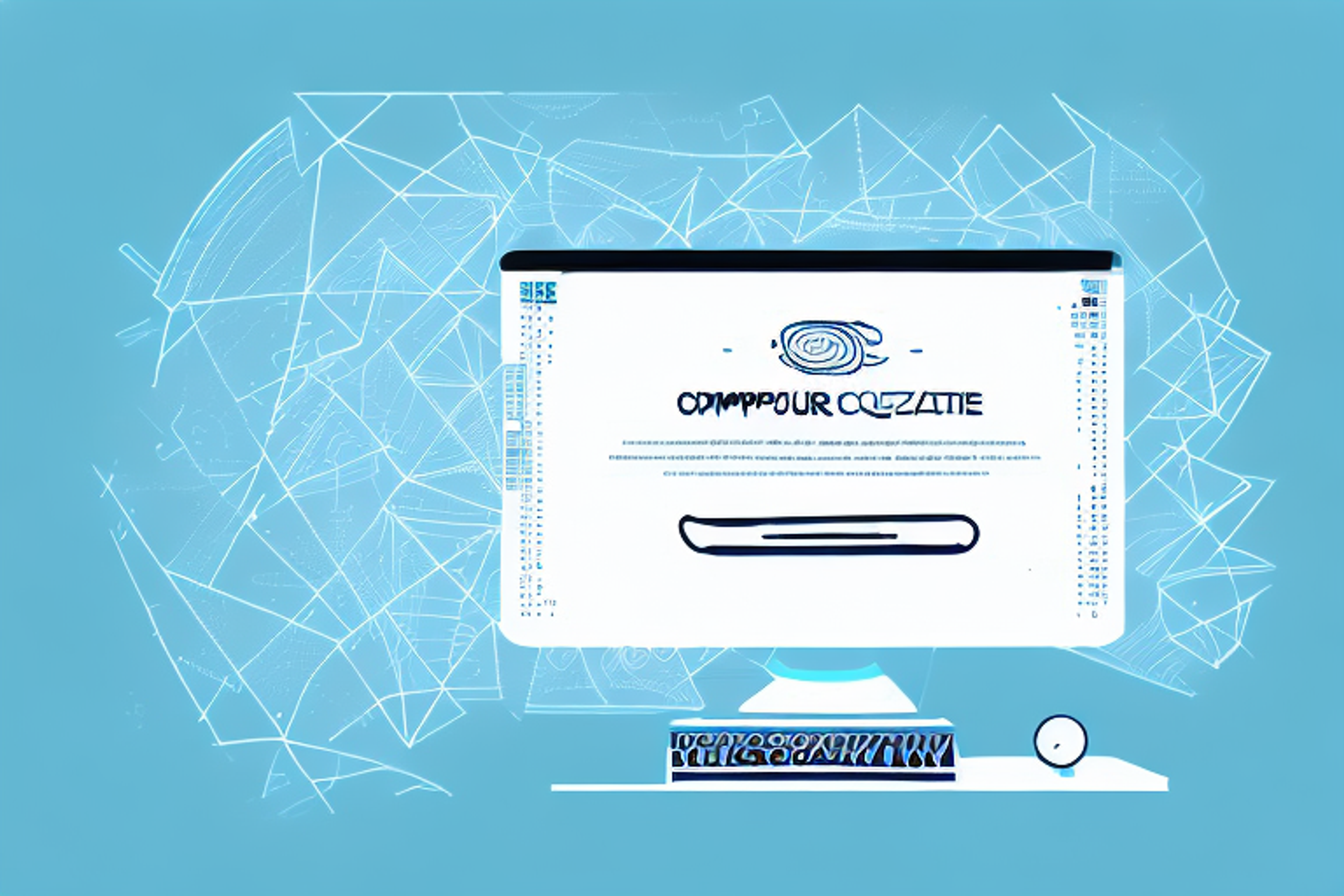
May 18, 2023
Cracking the Capital One Tech Case Interview: Essential Tips
Are you preparing for a Capital One tech case interview? Look no further! Our article provides essential tips and strategies to help you crack the interview and land your dream job.

How to Answer the "Why Roland Berger?" Interview Question
Learn how to ace the "Why Roland Berger?" interview question with our expert tips and advice.
- BECOME A CONTRIBUTOR
- WHITE PAPERS
- THE SUPPLY CHAIN DICTIONARY

What is Sales & Operations Planning?
The 4 supply chain metrics, static inventory an untapped source of working capital, s&op, a vision for the future. an interview with eric tinker, improving behaviours in support of world class s&op: coach for excellence.
- Planning & Forecasting Articles
How Can Data Improve Supplier Decisions
Information-based negotiations in the digital age, hurt, help or hero how to define and get more out of your most important suppliers, how to spot supplier risk during pickups & deliveries, how to spot supplier risk during on-site evaluations.
- Procurement & Sourcing Articles
The Long Tail of Inventory and Why It’s Important
No more excuses: transformative iot is staring you in the face, predictive analytics let manufacturers see more clearly into their supply chains, rise of the grocers, how 3d printing is set to shake up manufacturing supply chains.
- Manufacturing & Production Articles
6 Tips for Maximizing Efficiency and Productivity of Warehouse Operations
Robot trucks or autonomous vehicles will revolutionize the supply chain, data integration made sexy, how to avoid the most common warehouse safety hazards, out darn spot out, i say.
- Warhouse & Transport Articles
Returns – A Threat to the Bottom Line or an Opportunity to Cut Costs?
Supply chain sustainability takes root, why the 2030 sustainable development goals matter to packaging professionals, to build sustainable products, listen to your customers, getting packaging costs down to size.
- Reverse Logistics Articles
Transform Your Supply Chain For Omnichannel
The impact of maintenance operations on supply chain management, is your supply chain strategy inside-out or outside-in, how industry benchmarks can boost your asset recovery, supply chain visibility: we should be striving for more.
- Supply Chain Management articles
Accelerating the Shift to More Efficient Trucks
Insight – is it ok to lie, supply chain execution software convergence, 3d printing and the supply chains of the future, changing the production performance metric, supply chain management case study: the executive’s guide.
By Supplychainopz
Professionals in supply chain management use various methods to determine how to improve the performance of supply chain operations. Analysis of case study is certainly one of the most popular methods for people from business management background. In order to accelerate the learning, this article has gathered 20+ most sought-after supply chain case studies, analyzed/categorized them by industry and the findings are presented.

Boeing wants to encourage more flight frequency and direct route using a smaller capacity aircraft. Then they decide to outsource many things such as the design, testing and production of key components to key industrial partners and try to reduce number of components that go to assembly. The ultimate goal is to finish the final production process within 3 days. Airbus takes a bit different marketing approach. They want to utilize high capacity airplane to help airlines drive the operating cost down. They decide to selectively outsource the production of parts and keep the design and production of key components in-house.

Supply Chain of fashion industry involves a time based competition. Many customers have the unique product needs but a competition is very fierce because of the low barriers of entry. Many new players try to offer specialized products to customers all the time. This section features the supply chain case studies of H&M, Benetton, Zara and Adidas. – H&M aims to be the price leader in the fashion market.In order to materialize its vision, H&M tries to eliminate the middlemen in various stages of supply chain and consolidate the buying volumes. Product design is also the central part of its strategies. They don’t try to follow the high fashion designs but try to adopt the street trends which are easier to produce. At the end of the day, they can bring products to market within 2-3 weeks. – Benetton , in contrast, chooses to have a full control of its production but allow its licensees to operate the stores so they can focus on production and quality control. The reason is that they would like to create the worldwide brand awareness. For fast moving products, they use the production facilities in Europe. Asian suppliers will perform production for standardized products. – Zara is very famous for its time based strategy. In order to launch a new product within 15 days, Zara uses a small lot production. A new product will be tested in pilot stores. If product sales is good, a larger batch will be ordered. Otherwise, remaining products will be removed from the shelves and sold as mark-down in other stores. This creates the perception among consumers that Zara’s products are unique and you have to take it while stock lasts. Vertical integration contributes to the success of Zara, they own the majority of its production facilities and stores (this is the reason why Quick Response can be effectively implemented). Its automated distribution centers are strategically located between the center of populations so products are delivered to stores quickly. Zara also works with Air France, KLM Cargo and Emirates Air in order that they can coordinate directly with the airlines to make the outbound shipments to its stores and bring back some raw materials and semi-finished materials with return legs. The last supply chain case study in the fashion retailing industry is Adidas . In order to cope with changing customers’ demand, they decide to undertake Mass Customization strategy. The whole idea is to develop, market and deliver the product variety that most customers will find what they want. The first steps towards mass customization is to strategically offer the product choices. Too few variations will disappoint a customer but too many variations will simply postpone a buying decision. After that, Adidas asks the same key suppliers to produce custom components in order to achieve the economy of scale. In order to compensate a long waiting time, Adidas uses air freight or courier service. The reason why they can do this is that customized products are sold directly to customers so they have the higher profit margin to compensate the higher transportation cost. Supply chain strategy of the fashion retailing industry is summarized as below,

FMCG industry is typically the products sold to customers at a low cost and will be completely consumed within 1 year. The nature of this industry is the short product life cycle, low profit margin, high competition and demand fluctuation. This section will present the case studies of P&G, Unilever and Coca-Cola respectively. Forecasting and new product introduction has always been the issues for many FMCG companies, P&G is no exception. To cope with this, P&G conducts a merchandise testing at the pilot stores to determine the customer’s response to new product before the launch. The result is that the forecast accuracy is improved because a demand planner has an additional source data to make a better decision. Moreover, products can be shipped to stores in-time then lost sales is minimal. – Unilever also feels that the competition in FMCG industry has significantly increased. They have to launch the new products on regular basis but the forecasting of new product is difficult. So they create a better classification of new products (base, relaunch, repack, new) using a regression model to identify potential forecast errors for each type of new product. – Coca-Cola doesn’t really have many stock keep units when compared with other companies in the same industry. However, products go to over 2.4 million delivery points through over 430 distribution centers. Managing transportation at this scale is the absolute challenge. In order to streamline the delivery, Coca-Cola implemented a vehicle routing software. The reason is that is the software vendor has a very good relationship with Coca-Cola’s legacy ERP software vendor. Moreover, the vendor has a solid connection with the university who can help to develop the algorithm that fits in with the business’ needs. The result is that transportation planners at each distribution center can use the new tool to reduce travelling time/distance on daily basis.

Lean manufacturing concept has been implemented widely in the automotive industry so the case studies about lean manufacturing is very readily available. Due to the increasing competition in the automobile industry, car manufacturers have to launch a new model to the market more frequently. This section will show you how BMW manages a long term planning, how Ford applies lean concept to the new product development and how Hyundai manages the production planning and control. – BMW uses a 12-year planning horizon and divides it into an annual period. After that, they will make an annual sales forecast for the whole planning horizon. After the demand is obtained, they divide sales into 8 market and then select the appropriate production sites for each market, considering overall capacity constraints and total cost. As you may notice, this kind of a long range planning has to be done strategically. – Ford calls its product development system as “work streams” which include the body development, engine development, prototyping and launch process . The cross-functional team are the experts and their roles are to identify key processes, people, technology necessary for the development of new prototype. Each work stream team is responsible to develop timeline of each process. Detailed plan is usually presented on A3 sized paper. They clearly identifying current issues they are facing with supporting data, drawings and pictures. On weekly basis, they organize a big group meeting of all work stream team to discuss the coordination issues. – Hyundai deploys a centralized planning system covering both production and sales activities across the facilities and functional areas. They develop a 6-month master production plan and a weekly and a daily production schedule for each month in advance. During a short term planning (less than one month), they pay much attention to the coordination between purchasing, production and sales. Providing a long term planning data to its suppliers help to stabilize production of its part makers a lot.

Life cycle of technology products is getting shorter and shorter every day. Unlike FMCG, the launch of a new product in the hi-tech industry requires the investment in research and development quite extensively. Then, a poor planning will result in a massive loss. This section will cover JIT and outsourcing by Apple Inc, Supply Chain Risk Management by Cisco System, Technology Roadmap by Intel, Supply Chain Network Model by HP, Mass Customization by Dell and Quality Management by Sam Sung. Steve Jobs invited the Tim Cook to help to improve Apple’s Supply Chain in 1998. Jobs told Cook that he visited many manufacturing companies in Japan and he would like Cook to implement the JIT system for Apple. Jobs believed that Apple’ supply chain was too complex then both of them reduced the number of product availability and created 4 products segment, reduced on hand inventory and moved the assembling activities to Asia so they could focus on developing the breathtaking products that people wanted to buy. – Cisco Systems would like to be the brand of customer choice so they implement a very comprehensive supply chain risk management program by applying basic risk mitigation strategies, establishing appropriate metrics, monitoring potential supply chain disruptions on 24/7 basis and activate an incident management team when the level of disruption is significant. – Intel ‘s new product development is done by the process called Technology Roadmap. Basically, it’s the shared expectations among Intel, its customers and suppliers for the future product lineup. The first step to prepare the roadmap is to identify the expectations among semiconductor companies and suppliers. Then they identify key technological requirements needed to fulfill the expectations. The final step is to propose the plan to a final meeting to discuss about the feasibility of project. Some concerning parties such as downstream firms may try to alter some aspects of the roadmap. Technology Roadmap allows Intel to share its vision to its ecosystem and to utilize new technology from its suppliers. – HP ‘s case study is pretty unique. They face with a basic question, where to produce, localize and distribute products. Its simple supply chain network model is presented below,

From this example, only 3 possible locations result in 5 different way to design the supply chain. In reality, HP has more production facilities than the example above so there are so many scenarios to work with. How should HP decide which kind of a supply chain network configuration they should take to reduce cost and increase service to customer? The answer is that they use the multi-echelon inventory model to solve the problem. – Dell is one of the classic supply chain case studies of all time. Many industries try to imitate Dell’s success. The key ingredients of Dell’s supply chain are the partnership with suppliers, part modularity, vendor managed inventory program, demand management and mass customization. Also, you can find the simplified process map of Dell’s order-to-cash process as below,
– Sam Sung has proven to be the force to be reckoned with in the hi-tech industry. The secret behind its supply chain success is the use of Six Sigma approach. They studied how General Electric (GE), DuPont and Honeywell implemented six sigma. After that, they have created their own implementation methodology called DMAEV (define, measure, analyze, enable, verify). They use the global level KPI to ensure that each player in the same supply chain is measured the same way. Also, they utilize SCOR Model as the standard process. Any process changes will be reflected through an advance planning system (APS).

The last industry covered here is the general merchandise retailing industry. The critical success factor of this industry is to understand the drivers of consumer demand. Four case studies will be presented, namely, 7-11, Tesco, Walmart, Amazon and Zappos. – 7/11 is another popular case study in supply chain management. The integration of information technology between stores and its distribution centers play the important role. Since the size of 7/11 store is pretty small, it’s crucial that a store manager knows what kind of products should be displayed on shelves to maximize the revenue. This is achieved through the monitoring of sales data every morning. Sales data enables the company to create the right product mix and the new products on regular basis. 7/11 also uses something called combined delivery system aka cross docking. The products are categorized by the temperature (frozen, chilled, room temperature and warm foods). Each truck routes to multiple stores during off-peak time to avoid the traffic congestion and reduce the problems with loading/unloading at stores. – Tesco is one of the prominent retail stores in Europe. Since UK is relatively small when compared with the United States, centralized control of distribution operations and warehouse makes it easier to manage. They use the bigger trucks (with special compartments for multi-temperature products) and make a less frequent delivery to reduce transportation cost. Definitely, they use a computerized systems and electronic data interchange to connect the stores and the central processing system. – Wal-Mart ‘s “Every Day Low Prices” is the strategy mentioned in many textbooks. The idea is to try not to make the promotions that make the demand plunges and surges aka bullwhip effect. Wal-Mart has less than 100 distribution centers in total and each one serves a particular market. To make a decision about new DC location, Walmart uses 2 main factors, namely, the demand in the proposed DC area and the outbound logistics cost from DC to stores. Cost of inbound logistics is not taken into account. There are 3 types of the replenishment process in Wal-Mart supply chain network as below,
In contrary to general belief, Wal-mart doesn’t use cross-docking that often. About 20% of orders are direct-to-store (for example, dog food products). Another 80% of orders are handled by both warehouse and cross dock system. Wal-Mart has one of the largest private fleet in the United States. The delivery is made 50% by common carriers and 50% by private fleet. Private fleet is used to perform the backhauls (picks up cargoes from vendors to replenish DCs + sends returned products to vendors). Short-hauls (less than one working day drive) is also done by the a private fleet. For long-hauls, the common carriers will be used. There are 2 main information system deployed by Wal-Mart. “Retail Link” is the communication system developed in-house to store data, share data and help with the shipment routing assignments. Another system is called “Inforem” for the automation of a replenishment process. Inforem was originally developed by IBM and has been modified extensively by Wal-Mart. Inforem uses various factors such as POS data, current stock level and so on to suggest the order quantity many times a week. Level of collaboration between Wal-Mart and vendors is different from one vendor to the other. Some vendors can participate in VMI program but the level of information sharing is also different. VMI program at Wal-Mart is not 100% on consignment basis. – Amazon has a very grand business strategy to “ offer customers low prices, convenience, and a wide selection of merchandise “. Due to the lack of actual store front, the locations of warehouse facilities are strategically important to the company. Amazon makes a facility locations decision based on the distance to demand areas and tax implications. With 170 million items of physical products in the virtual stores, the back end of order processing and fulfillment is a bit complicated. Anyway, a simplified version of the order-to-cash process are illustrated as below,
Upon receipt of the orders, Amazon assign the orders to an appropriate DC with the lowest outbound logistics cost. In Amazon’s warehouse, there are 5 types of storage areas. Library Prime Storage is the area dedicated for book/magazine. Case Flow Prime Storage is for the products with a broken case and high demand. Pallet Prime Storage is for the products with a full case and high demand. Random Storage is for the smaller items with a moderate demand and Reserve Storage will be used for the low demand/irregular shaped products. Amazon uses an propitiatory warehouse management system to make the putaway decision and order picking decision. After the orders are picked and packed, Amazon ships the orders using common carriers so they can obtain the economy of scale. Orders will arrive at UPS facility near a delivery point and UPS will perform the last mile delivery to customers. Amazon is known to use Sales and Operations Planning (S&OP) to handle the sales forecast. Anyway, this must be S&OP process at product family/category level. To compete with other online retailers, Zappos pays much attention to the way they provide the services to customers. In stead of focusing on the call center productivity, Zappos encourages its staff to spend times over the phone with customers as long as they can so they can fully understand the customer’s requirements. They also upgrade the delivery from 3 days to 1 day delivery in order to exceed customer expectation.

All case study demonstrates that supply chain management is truly the strategic initiatives, not merely a cost cutting technique. Leading companies have a very strong customer focus because almost all of initiatives are something to fill the needs of customers. Relationship management is the unsung hero in supply chain management. It’s the prerequisite to the success of every supply chain. And at the end of the day, it comes down to the quality of supply chain people who analyze, improve and control supply chain operations. – See more at: http://www.supplychainopz.com/2014/04/supply-chain-management-case-study.html#sthash.MrnrGsyY.dpuf
Supply Chain Minded is a very active and fast growing online community in Supply Chain for Planning, Sourcing, Manufacturing, Delivery and Reverse Logistics professionals. The Supply Chain Minded community aims to inform and connect professionals active in Supply Chain, Purchasing, Manufacturing, Warehousing, Transport, Distribution; Reverse Logistics, Service Logistics, Lean & Six Sigma, 3PL.
© Copyright - Supply Chain Minded 2023
- Browse All Articles
- Newsletter Sign-Up
SupplyChain →
No results found in working knowledge.
- Were any results found in one of the other content buckets on the left?
- Try removing some search filters.
- Use different search filters.
- SUGGESTED TOPICS
- The Magazine
- Newsletters
- Managing Yourself
- Managing Teams
- Work-life Balance
- The Big Idea
- Data & Visuals
- Reading Lists
- Case Selections
- HBR Learning
- Topic Feeds
- Account Settings
- Email Preferences
Case Study: How Should We Diversify Our Supply Chain?
- Krishna G. Palepu

A Chinese appliance maker considers expanding production to Mexico.
In the wake of Covid-19’s disruptions, Kshore, a Chinese appliance maker, is thinking of realigning its supply chain. Like many other global manufacturers, it’s being pressured by its customers, which include Walmart and other large retailers, to reduce the time, expense, and environmental impact of shipping goods between countries.
On a trip to Monterrey, Mexico, Kshore’s CEO and COO tour factories that are closer to North American markets—and are impressed by their professionalism. But questions about transportation and staffing give the executives pause. Should Kshore start production in Mexico or consider other countries? Two experts weigh in.
On the sidewalk outside the airport in Mexico City, Yun Liu and Keith Smith, the CEO and COO of Kshore, a Chinese appliance maker with $150 million in annual revenues, waited for their town car. Their journey from Guangzhou, China, had been a long one.
- Krishna G. Palepu is the Ross Graham Walker Professor of Business Administration at Harvard Business School. His research focuses on globalization, emerging markets, and strategies for multinational and local companies in those markets. He cochairs the HBS executive program Leading Global Businesses.
Partner Center
- Technical Support
- Find My Rep
You are here
Supply chain management free case studies.

Share these free Supply Chain Management case studies with your class
Engage your students with real-world case studies that provide insights into supply chain practices, challenges, and opportunities. Share each case study with your students by simply copying and pasting the activity page URL into your learning management system (LMS).
Case 1: Rising Health Care Costs And The Role Of Outsourcing And Offshoring In The U.S. Health Care Sector
In this case study, your students will identify factors that are driving the health care costs higher in the United States than in peer countries. They will also discuss advantages and disadvantages of emerging trends in supply chain management such as adopting outsourcing in health care. After reading the case, they are encouraged to create an argument in favor of or against the view that health care offshoring is a threat to the U.S. health care industry. See case study .
- Case 2: McDonald’s Reinvents Itself Again
In this case study, your students will identify factors that are affecting demand management in the fast food industry and evaluate the reinvention strategy that McDonald’s has used to keep their fingers firmly on the pulse of their international customer base. Students will also be asked to advice McDonald’s with regards to future trends and the changes it should consider. After reading the case, they are encouraged to research areas in which the company plans to reinvent itself in the coming years, particularly in light of the appointment of its new CEO and the COVID-19 pandemic. See case study
Learn more about our offerings for your Supply Chain Management course:
Supply Chain Management
- Case 1: Rising Health Care Costs
- Sign up to receive new content alerts and special offers
- College Publishing Offerings
- Digital Solutions for Your Course
- Research Methods, Statistics, and Evaluation Catalog

Learn more about Sage Vantage
- Software Categories
Get results fast. Talk to an expert now.
855-718-1369
Creating an omnichannel supply chain: a macy’s case study.
In February 2020, Macy’s announced their Polaris plan , a three-year strategy created to stabilize profits and create growth. This plan included closing 125 underperforming stores and consolidating offices. It also included a major overhaul of their supply chain model.
But, of course, Macy’s had to close their doors less than 6 weeks later due to COVID-19. As their online presence was the only presence available, their longstanding supply chain strategy, which was already starting to cause major issues within the company, needed immediate attention.
Macy’s CEO Jeff Gennette stated in September 2020, “Everything on the digital agenda has been accelerated. We’re optimizing inventory placement to meet customer demand wherever and however they shop in our store.”
What’s so bad about Macy’s supply chain model?
Customers expect a strong omnichannel experience — one that integrates both the online and offline world of the retailer, enabling a frictionless shopping experience.
For retailers, the goal is to take the retailer’s replenishment cycle from days to hours and reduce inventory at stores. This way, retailers expand their use of stores to fulfil online orders and hold less inventory altogether, allowing them to dedicate more room for digital fulfillment.
Omnichannel shopping is the baseline expectation for customers, as companies such as Gap, Target, and many others have upped their omnichannel game.
And Macy’s is, er, behind.
Macy’s way of viewing their supply chain in the past was traditional: Move products from point A to point B and optimize costs at each stop along the way. Each delivery channel has its own transportation plan and technology stack, siloing all distribution and fulfillment centers.
This supply chain method was acceptable 10 years ago, but to stay afloat in the in-store and online retail spaces, Macy’s needed to make a change. Silos created major cost issues, not to mention slow speed and service in today’s two-day-delivery age.
The company’s supply chain model operated two separate warehouse networks, one for stores and the other for direct customer (online) orders. This system made rebalancing inventory nearly impossible, among other issues.
Macy’s supply chain also lacked a central platform for locating inventory at the SKU level across the chain, and the cost of goods were high compared to competitors since each private brand sold at May’s was sourced independently.
Creating a better supply chain
In 2019 Macy’s hired Dennis Mullahy , the first ever Chief Supply Chain Officer, to transform the supply chain into one that supports an omnichannel strategy.
Since then, Macy’s has made leaps and bounds in optimizing their supply flow, with COVID expediting the process.
The company is transitioning to a centralized warehouse model, implementing a flow and fold design, meaning a light initial allocation to stores and flexible replenishments. Multipurpose warehouses hold inventory, which can both replenish stores and fulfill e-commerce orders.
By having a centralized inventory, the retailer is better able to strengthen its margins and fulfill orders quicker and in the ways customers want.
“Our new model will leverage all of our assets much more productively and improve customer satisfaction by increasing speed of delivery as well as generate efficiencies in our operations and inventory utilization.” Dennis Mullahy wrote.
In addition, Macy’s is getting on board with using data and analytics to not only get items to customers faster, but also improve inventory forecasting and allocation and package consolidation.
The company plans to increase drop-shipping to boost margins in e-commerce, where delivery costs have been the largest drain on profits. They’ll also renew their efforts into Macy’s Backstage operations in order to compete with other off-price companies such as Nordstrom Rack and TJMaxx.

Behind the curve
And while these improvements are giving Macy’s the help it needs, they should’ve seen the warning signs sooner. Retailers of equal size have been making moves to change their supply chain for years now, and Macy’s is just catching up.
For example, Kohls has been working to integrate e-commerce and brick and mortar stores since the beginning of 2018. The company worked to change its purchase and inventory management system by starting with the smallest stores and working their way up.
Nordstrom has been working on omnichannel fulfillment for over 3 years, and brought in tech consulting firm Opex Analytics to help.
Walmart unveiled plans this month to install a high-tech automation system across 25 Walmart regional distribution centers through their partnership with Symbotic, a robotics and automation company — something they’ve been working toward since 2017. This system will digitize and modernize Walmart’s current supply chain facilities to enrich customer experience and support evolving demand.
But even though Macy’s may be a few steps behind, true omnichannel is a journey — and a difficult one at that. It requires a lot from the supply chain, especially in terms of speed, complexity, and efficiency. The global retailer is making strides in executing their Polaris plan by focusing more on the integrated fulfillment strategy and alternative fulfillment options and listening to what their customers want.
Looking for software? Try our IT Product Selection Tool
In this article...
Get FREE Expert Advice

How should our experts reach you?
Learn everything you need to know about Creating an Omnichannel Supply Chain: A Macy’s Case Study. Our experts will reach out to you shortly.
By clicking the button above, I confirm that I have read and agree to the Terms of Use and Privacy Policy.
Asking the better questions that unlock new answers to the working world's most complex issues.
Trending topics
AI insights
EY podcasts
EY webcasts
Operations leaders
Technology leaders
Marketing and growth leaders
Cybersecurity and privacy leaders
Risk leaders
EY Center for Board Matters
EY helps clients create long-term value for all stakeholders. Enabled by data and technology, our services and solutions provide trust through assurance and help clients transform, grow and operate.
Artificial Intelligence (AI)
Strategy, transaction and transformation consulting
Technology transformation
Tax function operations
Climate change and sustainability services
EY Ecosystems
Supply chain and operations
EY Partner Ecosystem
Explore Services
We bring together extraordinary people, like you, to build a better working world.
Experienced professionals
MBA and advanced-degree students
Student and entry level programs
Contract workers
EY-Parthenon careers
Discover how EY insights and services are helping to reframe the future of your industry.
Case studies
Energy and resources
How data analytics can strengthen supply chain performance
13-Jul-2023 Ben Williams
How Takeda harnessed the power of the metaverse for positive human impact
26-Jun-2023 Edwina Fitzmaurice
Banking and Capital Markets
How cutting back infused higher quality in transaction monitoring
11-Jul-2023 Ron V. Giammarco
At EY, our purpose is building a better working world. The insights and services we provide help to create long-term value for clients, people and society, and to build trust in the capital markets.
EY is now carbon negative
19-Sep-2022 Carmine Di Sibio
Our commitment to audit quality
13-Nov-2023 Julie A. Boland
No results have been found
Recent Searches

BEPS 2.0: as policies evolve, engagement is key
It remains to be seen whether the US will align its tax law with the OECD/G20’s global BEPS 2.0 rules. MNEs will feel the impact in 2024. Learn more.

How GenAI strategy can transform innovation
Companies considering or investing in a transformative GenAI strategy should tie generative artificial intelligence use cases to revenue, cost and expense. Learn more

Top five private equity trends for 2024
Read about the five key trends private equity firms will emphasize in 2024 as they create value
Select your location
close expand_more

How supply chain helps an electronics manufacturer connect customers
A global electronics company diversifies its manufacturing locations to increase its supply chain resilience.
- 1. Better question
- 2. Better answer
- 3. Better working world
How EY can help
The better the question
How can a supply chain deliver electronic devices on demand?
A US-based electronics manufacturer reduces supply chain risk to keep its customers tuned to all the right channels.
Explore our Offerings
Supply Chain & Operations Consulting Services
Discover how EY's supply chain team can help your business redefine its end-to-end supply chain and operations to support your enterprise objectives.
The electronics industry is facing steep supply chain challenges, reaching all the way back to the raw materials that make up those tiny components keeping people connected in real time.
A leading electronics supplier that provides mobile devices to consumers and public entities was experiencing shortfalls due to overreliance on materials and manufacturing in Asia. A perfect storm of factors, including the COVID-19 global pandemic and widespread geopolitical instability, has weakened the global supply chain, and cross-border labor is no longer guaranteed.
Transportation delays, both in the air and on the water, are extending production lead times. Country-specific tax and trade regulations are also threatening shipping timelines and slowing product delivery dates for customers.
“Corporate leaders at this electronic device company recognized that supply chain resilience has become an urgent business imperative for their organization,” said Jim Morton, Executive Director for the Ernst & Young LLP Business Consulting supply chain practice. “With most of their customer base in the US, they recognized that they needed to diversify their sourcing and production options as effectively as possible, which meant varying manufacturing locations to complement their global portfolio.”
Leaders engaged an integrated EY team experienced in supply chain modeling and optimization , tax and trade. The team developed a comprehensive plan that would diversify manufacturing and alleviate the organization’s long-term supply chain risk.
EY teams’ extensive tax experience, deep understanding of global incentives and locations, and keen geopolitical business perspective showed the client how it can continue to help consumers access critical mobile devices and carve a sustainable new path forward for its business.
Diversified manufacturing locations reduce supply chain risk
An integrated digital model evaluates multiple operation sites to yield informed decisions.
Geostrategic Business Group
Our Geostrategic Business Group (GBG) can help your business translate geopolitical insights into business strategy to manage political risk. Find out how.
With its deepest manufacturing roots in Asia, the mobile device provider needed to diversify its production footprint. Supply chain disruptions, longer ocean transport times, region-specific trade restrictions and frequent unexpected delays were pushing leaders to consider adding manufacturing sites closer to the US – the location of their corporate headquarters and most of their customer base.
Research from EY teams shows that 64% of companies have re-shored some elements to improve sustainability. In addition, 42% of companies said that ensuring sustainable and diverse sourcing was a priority. With data such as these in mind, the company turned to an EY cross-practice team for a strategy to augment core operations in more accessible and stable locations, reducing its overall supply chain risk while maintaining existing operations in Asia and elsewhere. Faced with a daunting and costly business decision, leaders needed assurance they could diversify their manufacturing and still procure the right materials, maintain quality standards, and deliver reliable products to meet urgent user needs.
The EY team assessed and designed a more diverse supply chain network with the company’s global business in mind.
Supply chain optimization was done based on a computerized model to assess the global supply chain, mapping raw materials to flow of goods, to distribution centers and finally to customer locations. The model evaluated current networks against future state options, assessing millions of site variables rapidly to provide leadership with the informed perspective they needed. The EY digital model brought an integrated view of the tax considerations inherent in ramping up manufacturing in new sites and countries, including customs duties, direct and indirect tax implications and country-specific regulations. The EY Geostrategic Business Group provided clarity around government labor, trade policies and local laws to further optimize recommendations, blending speed and cost to enable on-demand inventory.
"With recent supply chain disruption, trade wars and geopolitical uncertainty, this global electronics leader needed an integrated supply chain model so they could successfully diversify their manufacturing portfolio, avoid production delays, and address country-specific issues,” said Morton. “The EY supply chain optimization model helped them make more informed decisions and select their new manufacturing site in North America.”
End-to-end supply chain analysis was conducted by tracking the company’s highest-priority devices. Validated data inputs were primed and transitioned from a flow-constrained model to a demand-driven model. The analysis evaluated economic value added with the future state footprint, insourcing vs. outsourcing manufacturing operations, tax considerations, skilled labor availability, geopolitical factors, ESG and carbon footprint impact, and the reduction of supply chain complexity.
A supply chain scorecard was created by the EY team to help leaders evaluate manufacturing sites more critically, assessing six key supply chain factors:

Using the information gathered by the EY scorecard and digital assessment tools, the electronics company was able to ultimately select a new near shore location as its next manufacturing site. With this new location identified, EY teams will now work with the client to build out a roadmap to ramp up operations – including manufacturing providers, tax implications, geopolitical and regulatory guidance.
The better the world works
Supply chain optimization keeps customers connected around the world
The forward-thinking EY supply chain model diversifies production and minimizes risk.
For a leading electronics provider that serves millions of customers around the world, keeping the organization’s supply chain operating smoothly is of paramount importance. Comprehensive EY supply chain modeling and optimization for this organization was designed with a future state supply chain in mind, so that the organization could vary its manufacturing portfolio, maintain current production quotas, mitigate risk and reduce excess product inventory by 27%.
The EY digital supply chain optimization model helped the electronics leader assess site locations across countries, geopolitical factors, trade implications, trade risk and tax regulations. The manufacturing site scorecard helped the company narrow down possible manufacturing sites and identify specific locations within countries that will help the organization further reduce their carbon emissions by 15%. The supply chain solution will also increase the organization’s efficiency by reducing the length of haul from production site to customer by 50%, and by lowering labor costs.
“Our integrated supply chain model, which included extensive tax experience and deep geopolitical business perspective across locations, provided this electronics powerhouse a solution that would help them diversify and de-risk their supply chain, allowing important communication devices to continue to be readily available worldwide,” said Morton.
As the company works to ramp up its newest manufacturing location in North America, EY teams will be on board to help it conduct continued geopolitical and tax analysis, develop end-to-end supply chain analysis, establish timing, and evaluate distribution footprint expansion.
- 50% reduction in the average length of haul from production to consumer
- 27% reduction of excess product inventory in the pipeline
- 15% reduction in future carbon emissions impact from transport
- Lower duty costs on products imported from the near shore location
- Potential cost savings gained from business incentives provided by the near shore location
EY OpsChain Contract Management Solution
Discover how EY's OpsChain Contract Management Solution can help your TMT business boost speed, visibility and trust along your digital value chain. Learn more.
Related topics

Glenn Steinberg
Helping companies transform, create value and optimize business performance. Thirsty for knowledge. Ski enthusiast. Husband and father of two Michigan Wolverines.

Greg Cudahy
Years of experience in global operations transformation, price and revenue optimization, sourcing, integrated planning, supply chain synchronization and collaborative applications.
Explore our case study library
EY Consulting case studies are a window into how we work alongside our clients to deliver strategic, sustainable growth.

- Connect with us
- Our locations
- Do Not Sell or Share My Personal Information
- Legal and privacy
- Accessibility
- Open Facebook profile
- Open X profile
- Open LinkedIn profile
- Open Youtube profile
EY refers to the global organization, and may refer to one or more, of the member firms of Ernst & Young Global Limited, each of which is a separate legal entity. Ernst & Young Global Limited, a UK company limited by guarantee, does not provide services to clients.
47 case interview examples (from McKinsey, BCG, Bain, etc.)

One of the best ways to prepare for case interviews at firms like McKinsey, BCG, or Bain, is by studying case interview examples.
There are a lot of free sample cases out there, but it's really hard to know where to start. So in this article, we have listed all the best free case examples available, in one place.
The below list of resources includes interactive case interview samples provided by consulting firms, video case interview demonstrations, case books, and materials developed by the team here at IGotAnOffer. Let's continue to the list.
- McKinsey examples
- BCG examples
- Bain examples
- Deloitte examples
- Other firms' examples
- Case books from consulting clubs
- Case interview preparation
Click here to practise 1-on-1 with MBB ex-interviewers
1. mckinsey case interview examples.
- Beautify case interview (McKinsey website)
- Diconsa case interview (McKinsey website)
- Electro-light case interview (McKinsey website)
- GlobaPharm case interview (McKinsey website)
- National Education case interview (McKinsey website)
- Talbot Trucks case interview (McKinsey website)
- Shops Corporation case interview (McKinsey website)
- Conservation Forever case interview (McKinsey website)
- McKinsey case interview guide (by IGotAnOffer)
- McKinsey live case interview extract (by IGotAnOffer) - See below
2. BCG case interview examples
- Foods Inc and GenCo case samples (BCG website)
- Chateau Boomerang written case interview (BCG website)
- BCG case interview guide (by IGotAnOffer)
- Written cases guide (by IGotAnOffer)
- BCG live case interview with notes (by IGotAnOffer)
- BCG mock case interview with ex-BCG associate director - Public sector case (by IGotAnOffer)
- BCG mock case interview: Revenue problem case (by IGotAnOffer) - See below
3. Bain case interview examples
- CoffeeCo practice case (Bain website)
- FashionCo practice case (Bain website)
- Associate Consultant mock interview video (Bain website)
- Consultant mock interview video (Bain website)
- Written case interview tips (Bain website)
- Bain case interview guide (by IGotAnOffer)
- Digital transformation case with ex-Bain consultant
- Bain case mock interview with ex-Bain manager (below)
4. Deloitte case interview examples
- Engagement Strategy practice case (Deloitte website)
- Recreation Unlimited practice case (Deloitte website)
- Strategic Vision practice case (Deloitte website)
- Retail Strategy practice case (Deloitte website)
- Finance Strategy practice case (Deloitte website)
- Talent Management practice case (Deloitte website)
- Enterprise Resource Management practice case (Deloitte website)
- Footloose written case (by Deloitte)
- Deloitte case interview guide (by IGotAnOffer)
5. Accenture case interview examples
- Case interview workbook (by Accenture)
- Accenture case interview guide (by IGotAnOffer)
6. OC&C case interview examples
- Leisure Club case example (by OC&C)
- Imported Spirits case example (by OC&C)
7. Oliver Wyman case interview examples
- Wumbleworld case sample (Oliver Wyman website)
- Aqualine case sample (Oliver Wyman website)
- Oliver Wyman case interview guide (by IGotAnOffer)
8. A.T. Kearney case interview examples
- Promotion planning case question (A.T. Kearney website)
- Consulting case book and examples (by A.T. Kearney)
- AT Kearney case interview guide (by IGotAnOffer)
9. Strategy& / PWC case interview examples
- Presentation overview with sample questions (by Strategy& / PWC)
- Strategy& / PWC case interview guide (by IGotAnOffer)
10. L.E.K. Consulting case interview examples
- Case interview example video walkthrough (L.E.K. website)
- Market sizing case example video walkthrough (L.E.K. website)
11. Roland Berger case interview examples
- Transit oriented development case webinar part 1 (Roland Berger website)
- Transit oriented development case webinar part 2 (Roland Berger website)
- 3D printed hip implants case webinar part 1 (Roland Berger website)
- 3D printed hip implants case webinar part 2 (Roland Berger website)
- Roland Berger case interview guide (by IGotAnOffer)
12. Capital One case interview examples
- Case interview example video walkthrough (Capital One website)
- Capital One case interview guide (by IGotAnOffer)
13. Consulting clubs case interview examples
- Berkeley case book (2006)
- Columbia case book (2006)
- Darden case book (2012)
- Darden case book (2018)
- Duke case book (2010)
- Duke case book (2014)
- ESADE case book (2011)
- Goizueta case book (2006)
- Illinois case book (2015)
- LBS case book (2006)
- MIT case book (2001)
- Notre Dame case book (2017)
- Ross case book (2010)
- Wharton case book (2010)
Practice with experts
Using case interview examples is a key part of your interview preparation, but it isn’t enough.
At some point you’ll want to practise with friends or family who can give some useful feedback. However, if you really want the best possible preparation for your case interview, you'll also want to work with ex-consultants who have experience running interviews at McKinsey, Bain, BCG, etc.
If you know anyone who fits that description, fantastic! But for most of us, it's tough to find the right connections to make this happen. And it might also be difficult to practice multiple hours with that person unless you know them really well.
Here's the good news. We've already made the connections for you. We’ve created a coaching service where you can do mock case interviews 1-on-1 with ex-interviewers from MBB firms . Start scheduling sessions today!
The IGotAnOffer team

This site uses cookies to improve your experience. By viewing our content, you are accepting the use of cookies. To help us insure we adhere to various privacy regulations, please select your country/region of residence. If you do not select a country we will assume you are from the United States. View our privacy policy and terms of use.
- Inventory Management Software
- Forecasting
- Sustainability
- Supply Chain Visibility

Thoughts. Selecting Supply Chain Software
Supply Chain Shaman
APRIL 29, 2024
I find that most companies’ understanding of supply chain planning is immature, and that next week, at the Gartner Supply Chain Summit in Orlando, that many will don their Mickey ears to discuss what I consider outdated supply chain planning models. The reason? How do you do it better?”
Pricing Optimization at Delly’s: A Case Study in Successful AI Enablement
Talking Logistics
SEPTEMBER 27, 2023
This includes implementing Enterprise Resource Planning (ERP), Customer Relationship Management (CRM), Demand Planning , Inventory Management, Transportation Management, and Warehouse Management applications. Over the years, they have invested in technology to streamline and automate a variety of business processes.
This site is protected by reCAPTCHA and the Google Privacy Policy and Terms of Service apply.
- Manufacturing Sustainability Surge: Your Guide to Data-Driven Energy Optimization & Decarbonization
MORE WEBINARS
Trending Sources
- Logistics Viewpoints
The Logistics of Logistics
- The Logistics & Supply Chain Management Society
- Enterra Insights
- The Network Effect

Demand Planning: Whipped And Chained by Tradition
SEPTEMBER 13, 2023
She wrote, “I have been working in the supply chain for 35 years, and we are still trying to solve the “demand” issue. Solving from a supply side seems to work for many companies I work with. Over the last two years, I actively engaged technologists and business leaders to redefine demand planning .
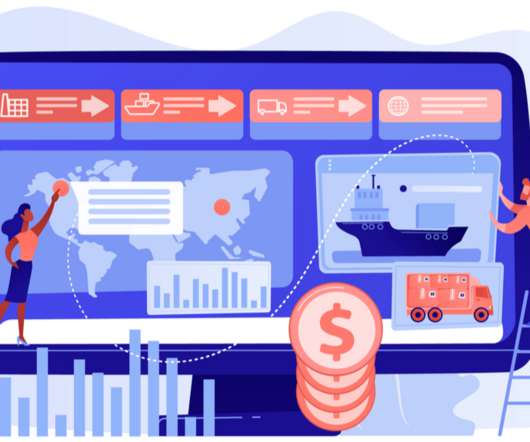
Supply Chain – Finance Connection: A Supply Chain Improvement Case Study
APRIL 27, 2021
In this blog, we will demonstrate the link between Finance and Supply Chain and how this understanding can help define supply chain improvements by understanding elements of the Balance Sheet and Income Statement.
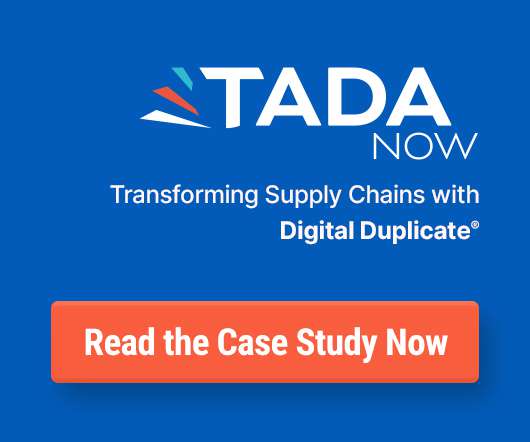
Multi-Tier Supply Chain Application Enables Fortune 100 Company to Gain Visibility
Advertiser: TadaNow
A Fortune 100 company wanted to have seamless visibility, collaboration and synchronized planning with its multiple levels of suppliers. Which suppliers were being roadblocks, Which posed threats to assurances in supply , What information was being conveyed between suppliers and other supplier and inventory management issues.

Elevating The Voice of the Supply Chain Contrarian
JUNE 21, 2023
Many of the case studies being presented at today’s conferences were born during the pandemic and the post-pandemic turbulence. While companies talk digital, the projects follow traditional supply -centric paths. We have not achieved supply chain economies of scale. The analysis is now in its ninetieth year.

Supply Chain Case Study: the Executive's Guide
Supply Chain Opz
JUNE 1, 2014
Professionals in supply chain management use various methods to identify best practices to improve the operations. Analysis of case study is certainly one of the most popular methods for people from business management background. Supply Chain of fashion industry involves a time based competition.
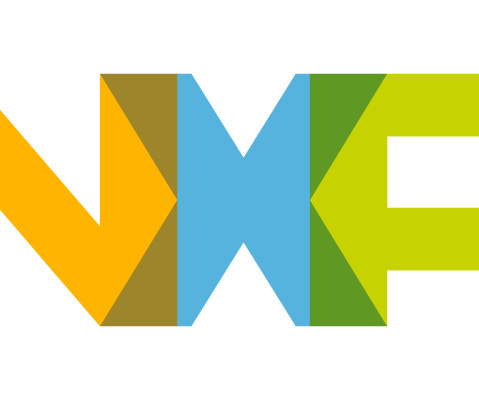
Case Study: NXP Semiconductors
Procurement Academy
OCTOBER 18, 2023
Our Review module ensured NXP’s learners were given the most personalized learning plans for their skills, role and goals. The post Case Study : NXP Semiconductors appeared first on Skill Dynamics. 93% felt the training was relevant to their jobs. 80% indicated that the new knowledge they had gained would be applied very often.

Streamlined Sales and Operations Planning: A Konica Minolta Case Study
AUGUST 13, 2014
by Melissa Clow Today we have a great customer, Konica Minolta, that recently allowed us to write up their sales and operations planning story and I believe that it has merit in sharing with our readers! At Konica Minolta, the IT Equipment Business team was struggling to get a quick and comprehensive view of the global supply chain network.
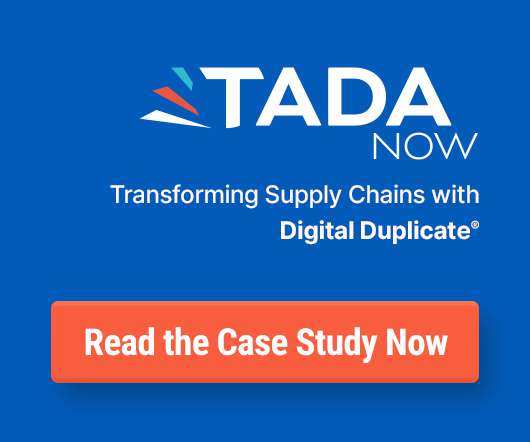
How a Fortune 500 Company Transformed its Supply Chain Using a Digital Twin-Enabled Control Tower
Supply chain plays a crucial role for this Fortune 500 automotive manufacturer. With the onset of COVID-19 in 2020, along with demand and supply fluctuations in the subsequent years, many manufacturers, including this one, saw significant stress on their global supply chains . Key capabilities. Customer benefits.

Case Study: BNP Paribas
NOVEMBER 8, 2023
Each learner has been assigned with a learning plan based upon their selected role and has been able to continue to select further courses from Skill Dynamics’ procurement catalogue to help them improve their skills. The post Case Study : BNP Paribas appeared first on Skill Dynamics.

Case Study: Ewellix
MARCH 2, 2023
After seeing the quality of Skill Dynamics’ solution and content, Group Director Purchasing saw an opportunity to develop the supply chain too and introduced the Group Director Demand Chain & Logistics, Magnus Pettersson , into the program. Ewellix is working hard to ensure this learning benefit is utilized and a success.

Trying to Push Content Above the Noise
JANUARY 2, 2024
As I wrote, I reflected on the Generative AI hype cycle in the supply chain market and the contribution to noise. I questioned in this time of uncertainty if supply chain leaders will value data-driven content. They underperform in their peer groups against companies weaker in planning . ” Figure 2.

Case Study: Röhlig Logistics and Gravity Supply Chain Solutions
Gravity Supply Chain
JUNE 6, 2022
Navigating complex supply chains and managing rising customer demands is challenging, especially for businesses in the logistics space. Optimised planning of inbound delivery. Download full case study here. The Business Problem. Enhanced insight and visibility from vessel tracking.

CEVA Logistics Drives Agile, Multi-Leg Inbound Flows for Tech Company
Advertisement
CEVA Logistics, a global leader in third-party logistics, was contracted to help a technology company manage its complex supply chain , supporting B2B, B2C, and reverse flows across multi-leg transport.

Judging Supply Chain Improvement: Campbell Soup Case Study
AUGUST 11, 2014
Over the course of the last two years, we at Supply Chain Insight s have worked on a methodology to gauge supply chain improvement. We named it the Supply Chain Index. We have found that supply chain metrics are gnarly and complicated.During Background on the Supply Chain Index.

AI in the Food Industry: Case Studies, Challenges & Future Trends
MARCH 28, 2024
Integrating Artificial Intelligence (AI) within different segments of the Food Industry, including transportation and logistics, production planning , quality control, and others has kicked off revolutionary transformations. Supply Chain Administration Supply chains are the backbone of the food industry.

How Technology Makes Continous Innovation Possible: A Case Study with Unilever
Supply Chain Management and Analytics
OCTOBER 5, 2023
Autonomous E2E decision making isn't a distant dream; it's the reality crafted by the synergy between Unilever, a global consumer goods giant, and Solvoyo, the norm-busting partner in end-to-end supply chain planning .

AI in the Retail Industry: Benefits, Case Studies & Examples
MARCH 27, 2024
The Evolution of Retail Supply Chain & Logistics: A Pre-AI Overview In the pre-AI era, the retail sector was markedly different, especially since the traditional supply chain and logistics models were largely driven by manual labor. How is AI Revolutionizing Retail Supply Chains ?

Case Study: Plan Farther Ahead with DDMRP
Demand Driven Technologies
MAY 25, 2021
The pandemic dealt an unprecedented blow to global supply chains , with virtually all business leaders reporting disruptions to their strategic sourcing and supplier management processes. Yet some companies found ways to mitigate the impact to their operations.

Navigating the Climate Crisis in Apple’s Global Supply Chain
SCM Research
SEPTEMBER 30, 2023
This article, entitled Apple’s Supply Chain Is on a Collision Course With Climate Change , argues that Apple’s supply chain faces major risks from the climate crisis. I believe it would make a great case study for business school classes, using the following questions: 1.

Machine Learning in Supply Chain: Definition, Uses, Case Studies
APRIL 4, 2023
Machine learning is changing nearly every aspect of the supply chain and how we deliver goods to customers. In this article, we explore the potential of machine learning in supply chain management and the different types and uses of the technology. How is machine learning used in supply chain management?

Companies Using ERP: Case Studies
SEPTEMBER 22, 2021
ERP stands for “Enterprise Resource Planning ”. This type of software is used by businesses to plan and oversee routine operations, such as supply chain management, manufacturing, services, project management, customer relationship management, risk management, compliance, accounting and procurement. Case Study #2: Veoneer.

Demand Planning Apps Top Supply Chain Planning Machine Learning
DECEMBER 11, 2018
Gartner recently polled both users and vendors on which supply chain planning (SCP) applications are employing machine learning and in three different analysis, demand planning and demand forecasting came out top of the list. Our first Gartner machine learning customer case study appeared five years ago.

A Case Study in Closed-Loop Operational Management
NOVEMBER 19, 2014
As I’ve said before, the biggest challenge facing supply chain and logistics executives today is not managing change, because that’s always been the norm in supply chain management, but managing the rapid pace of change. So, what’s been the problem? A key constraint has been speed.

Redesign to Improve Value: A Case Study of a Supply Chain Leader
JUNE 21, 2014
This week, I will speak at Llamasoft’s conference on improving supply chain network design. One of the reports that I am writing is on the state of Supply Chain Planning (SCP). In the recent study of the Voice of the Supply Chain Leader , we find that the gaps are large, and growing.

High Performance Inventory: The Supply Chain Differentiator
It’s the typical supply chain refrain. So how can organizations face this new market landscape with confidence and a solid planning process? A successful planning process leverages inventory itself as a tool, increasing the payoff of available stock by balancing it with business goals and service targets.

Heura Uses ToolsGroup for Digital Supply Chain Transformation to Support Global Expansion
NOVEMBER 9, 2023
With ToolsGroup’s AI-powered demand forecasting, the plant-based food innovator revolutionizes its supply chain , maximizing accuracy, speed, and business performance. As Heura’s business grew, so did the complexity of its supply chain .
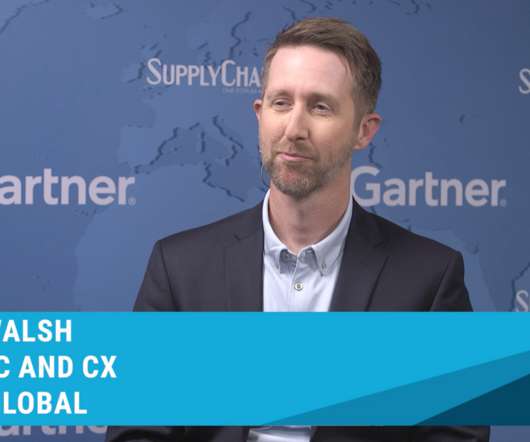
Watch: Berry Global and Logility: A Case Study
Supply Chain Brain
AUGUST 16, 2022
Logility's demand- planning tool has immeasurably improved the customer experience at Berry Global, says David Walsh, vice president of supply chain and customer experience at Berry Global.
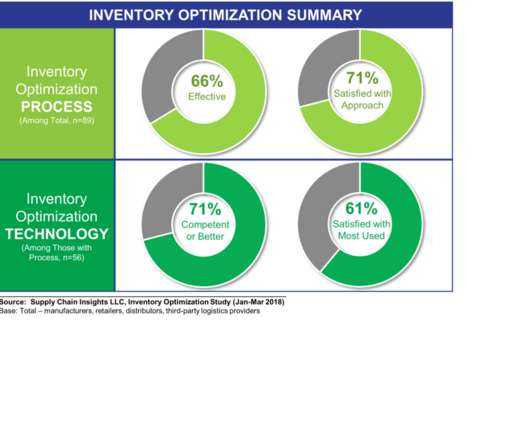
Strong Supply Chains Required For an Economic Rebound: Six Steps To Take
APRIL 15, 2020
My last post on the Supply Chain Shaman blog was forty-five days ago. Then it was the redefinition of the supply chain for the global shutdowns Sick with the virus; I spent my energies writing and moderating podcasts. As we moved into our new roles, for all supply chains , demand shifted. Time to Know.

George Jetson and the case for modern supply chain planning
FEBRUARY 27, 2019
As a supply chain planner of a certain vintage, you remember The Jetsons and likely recall George working for Mr. Spacely at Spacely Space Sprockets. Spacely was all-in on taking a modern, collaborative approach to supply chain planning . Propel yourself to a modern planning experience. by Mike McAllister.

Pandemic Lessons For Supply Chain Leaders
FEBRUARY 18, 2021
The Covid-19 pandemic tested the global supply chain . Like riding a bumpy road, the supply chain leader is riding the ups and downs of changing market conditions facing greater variability day-to-day. Here, based on interviews with supply chain leaders, I share lessons learned. It will not be over soon.

FMCG Foods Turnaround: A successful S&OP Case Study
Enchange Supply Chain Consultancy
APRIL 21, 2021
I know I am prone to rattle on about Sales & Operational Planning (S&OP) but seeing the benefits being delivered to previously struggling businesses is extremely motivating for a confirmed “techy” like myself. I know, I know.
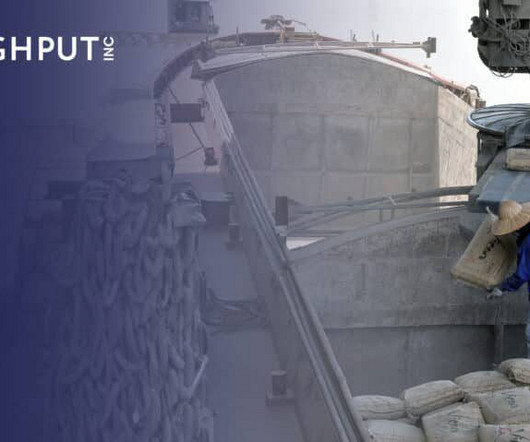
Navigating the Complexities of Ready Mix Concrete Logistics: A Case Study with ThroughPut
JANUARY 19, 2024
It not only impacts supply chain efficiency, but also customer satisfaction and revenue. Given all the challenges, the RMC manufacturer had clear goals that they wished to achieve: Supply Chain Visibility They needed detailed, real-time insights into their operations.
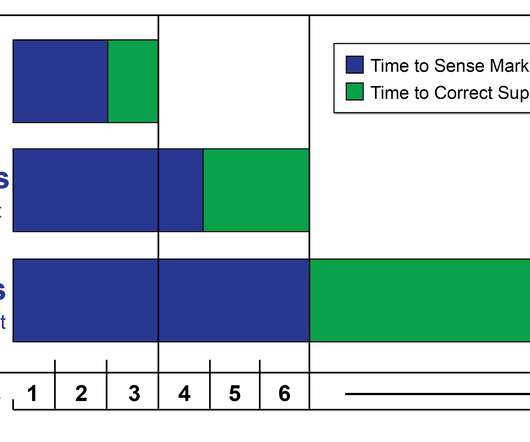
Help Supply Chain Planners Be More Successful In These Uncertain Times
MARCH 9, 2020
As I shopped at Best Buy for office supplies , I struggled to not think about the massive disruption of electronics supply chain . The Sam’s Club and Costco shortages of water, toilet paper and laundry products signals one thing for me: the spread of the virus will disrupt every supply chain . The problem?
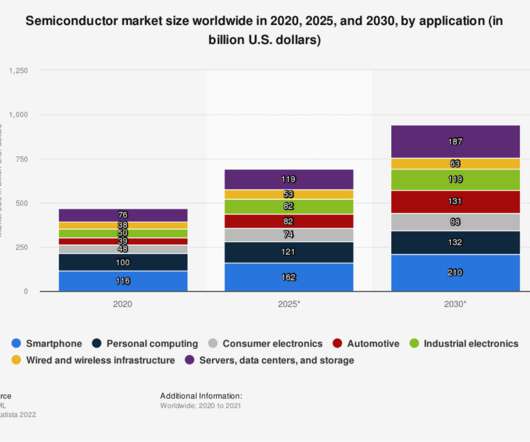
Pushing the Supply Chain Reset Button
JUNE 29, 2022
The global supply chain that we know today is built on three assumptions: rational government policy, low variability, and availability of logistics. The impact varies by supply chain sector and value chain . Instead, supply chain leaders need to focus on the minimization of waste, and the alignment of signals.

Supply Chain Planning Transformation
JANUARY 20, 2021
I was asked recently about what it takes to transform the supply chain planning process of a company. Supply Chain Planning Transformation was first posted on January 20, 2021 at 7:40 am. ©2017 " Supply Chain Link Blog - Arkieva " Use of this feed is for personal non-commercial use only.
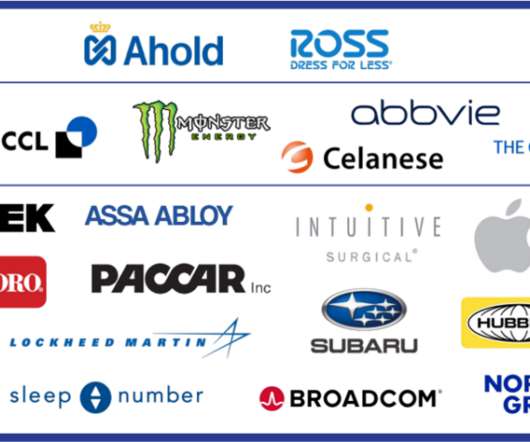
My Lessons in Interviewing Supply Chains to Admire Award Winners
JULY 21, 2022
In business conversations, the term supply chain excellence rolls off the tongue frequently in meetings, but what does it mean? Supply chain excellence is harder to define than to say. We designed the Supply Chains to Admire Methodology to help companies define supply chain excellence.

Throw back Thursday: Applied Materials case study, ‘Agility enables Customer Satisfaction and Growth’ at Kinexions
AUGUST 7, 2014
So, on this ‘Throw Back Thursday’, I would like to share Applied Materials case study , ‘Agility enables Customer Satisfaction and Growth’ at Kinexions. It’s a low-volume, high-mix world – making accurate demand planning extremely difficult.

Inside the Shipper Mind with Jim Bierfeldt
NOVEMBER 13, 2023
His expertise includes strategic planning , brand positioning, advertising, public relations, website strategy and design, and development of white papers, case studies and other content. They have been featured in leading industry publications such as Logistics Management, Supply Chain Management Review, and FreightWaves.

Transversing the Paradox River
OCTOBER 11, 2023
Definition As I follow the evolution of supply chain technology, I am struck by what I see as a stream of paradox and anomaly, and the tendency of supply chain leaders to cling to convention. Leaders in building supply chain capabilities on graph technologies are failing to drive break through process innovation.
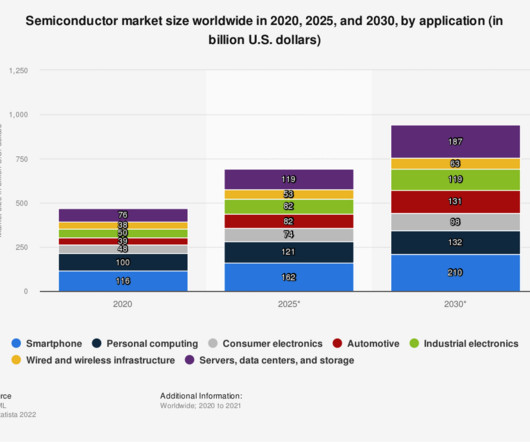
The Logistics & Supply Chain Management Society
JANUARY 3, 2024
Pushing the Supply Chain Reset Button by Lora Cecere , Founder, Supply Chain Insights Supply Chain Leaders Can’t Afford to Guess About the Future The global supply chain that we know today is built on three assumptions: rational government policy, low variability, and availability of logistics.

ToolsGroup Acquires Evo for Industry Leading Responsive AI
SEPTEMBER 26, 2023
The integration of Evo’s responsive AI solutions with ToolsGroup Service Optimizer 99+ (SO99+) and JustEnough® solutions will offer customers the most efficient, real-time supply chain and price optimization solution available.

TMS for SMB: A Case Study with Carhartt
OCTOBER 19, 2016
Planning & Optimization. The company ultimately selected Manhattan Associates’ cloud-based TMS (Carhartt was already using Manhattan’s WMS solution and was planning to upgrade it at the same time). “Our What defines the small and mid-sized business (SMB) market for transportation management systems (TMS)? Rate Management.
Stay Connected
Join 136,000+ Insiders by signing up for our newsletter
- Participate in Supply Chain Brief
- How to achieve six-figure benefits from digitizing paper-based supply chain operation
- 2019 Supply Chain Brief Summer Reading List
- Stay At Home Reading List
- Add a Source
- Add a Resource
- See All
- 2018 Supply Chain Brief MVP Awards
- 2019 Supply Chain Brief MVP Awards
- 2020 Supply Chain Brief MVP Awards
- 2021 Supply Chain Brief MVP Awards
- 2022 Supply Chain Brief MVP Awards
- Sun. May 05
- Fri. May 03
- Thu. May 02
- Wed. May 01
- Apr 27 - May 03
- Warehousing
- Procurement
- Transportation
- Supply Chain
- More Topics

Input your email to sign up, or if you already have an account, log in here!
Enter your email address to reset your password. a temporary password will be e‑mailed to you., be in the know on.
Supply Chain Brief
Expert insights. Personalized for you.
We organize all of the trending information in your field so you don't have to. Join 136,000+ users and stay up to date on the latest articles your peers are reading.

Get the good stuff
Subscribe to the following Supply Chain Brief newsletters:
You must accept the Privacy Policy and Terms & Conditions to proceed.

You know about us, now we want to get to know you!
Check your mail, we've sent an email to . please verify that you have received the email..
We have resent the email to
Let's personalize your content
Use social media to find articles.
We can use your profile and the content you share to understand your interests and provide content that is just for you.
Turn this off at any time. Your social media activity always remains private.
Let's get even more personalized
Choose topics that interest you., so, what do you do.
Are you sure you want to cancel your subscriptions?
Cancel my subscriptions
Don't cancel my subscriptions
Changing Country?
Accept terms & conditions.
It looks like you are changing your country/region of residence. In order to receive our emails, you must expressly agree. You can unsubscribe at any time by clicking the unsubscribe link at the bottom of our emails.
You appear to have previously removed your acceptance of the Terms & Conditions.

We noticed that you changed your country/region of residence; congratulations! In order to make this change, you must accept the Aggregage Terms and Conditions and Privacy Policy. Once you've accepted, then you will be able to choose which emails to receive from each site .
You must choose one option
Please choose which emails to receive from each site .
- Update All Sites
- Update Each Site
Please verify your previous choices for all sites
Sites have been updated - click Submit All Changes below to save your changes.
We recognize your account from another site in our network , please click 'Send Email' below to continue with verifying your account and setting a password.
You must accept the Privacy Policy and Terms & Conditions to proceed.
This is not me
Logistics and Supply Chain Case Studies
Review our case studies to see how we’ve helped major corporations turn logistical ideas into a reality., leading beverage distributor, penske logistics helps beverage distributor rapidly establish new warehousing operations.
When this distributor had to expand its operation quickly to counter a competitor, they turned to Penske to deploy a customized solution.
Baby2Baby Donation Transportation
Coordination and planning lead to successful transport of $3 million clothing donation.
Penske Logistics worked with Baby2Baby, a nonprofit that provides basic essentials to impoverished children, and Old Navy to transport $3M of clothing donations.
Luxury Product Manufacturer
Penske logistics reduces inventory shrinkage, improves overall inventory management.
A leading producer of fine luxury products required a partner who could improve their warehouse and distribution operations and reduce the theft.
Poultry Supplier
Transporting food items requires extra care and expertise.
Poultry producers, navigate a complex array of supply and delivery challenges to ensure their food arrives fresh, wholesome, and on-time.
Building Products Manufacturer
Customized fleet technology solution.
A leading building products manufacturer sought to streamline its supply chain operations and expand its fleet while improving visibility through the implementation of fleet management technology.
National Wholesale Distributor
A national wholesale distributor case study.
A national wholesale distributor of heating and air conditioning supplies was struggling to manage its complex supply chain and maintain high levels of customer service, which is a top priority.
Looping Process Ensures Continuous Production
Penske collaborated with Novelis to create a closed-loop recycling network that moves finished aluminum coils and transports scrap for new production.
A Global Manufacturer
Optimizing activities in the distribution center.
Penske worked with this global manufacturer to optimize its inventory routing and mode selection and to improve visibility to its supply chain.
Quick Service Restaurant
Food and beverage in-store delivery and warehousing.
Penske helped this restaurant chain get its supply chain fundamentals in place with the right logistics tools, truck driver training and warehousing solutions.
Tier 1 Automotive Component Supplier
Managing the inbound supply chain.
Penske helped this supplier minimize supply chain disruptions by designing a network that optimized mode selection, routing and analysis.
- Supply Chain Management
- Lead Logistics Provider
- Consulting Services
- Network Design
- Dedicated Contract Carriage
- Shared Dedicated Transportation
- Freight Management
- ClearChain ® Control
- Transportation Services
- Transportation Management Solutions
- Truckload Shipping Services
- Warehousing and Distribution
- Warehouse Design
- Warehouse Operations
- Multi-Client Warehousing
- Freight Brokerage
- Freight Forwarding
- Become a Carrier for Penske
Contact Penske Logistics about our services.

Library subject guides
Logistics and supply chain management.
- Key Resources
- Journals and Magazines
- Books and eBooks
- Company and Industry Information
Where to find case studies
- Additional information
Case studies generally describe real world practical examples from which others can gain insight for their own application. They can provide both positive examples and well as raise issues and challenges for others to be aware of.
To locate case studies in LibrarySearch , enter the search terms "case studies" or "case study*" and the keywords describing your topic.
Case studies can be located within the RMIT databases and across various subject areas.
Emerald Emerging Markets Case Studies (EEMCS)
Cases are written by case writers working in, or closely with, developing economies. They offer local perspectives with global appeal. The collection receives regular content updates throughout the year and all cases benefit from a supportive peer-review process to ensure the highest quality content.
- Emerald Insight A powerful business research tool that provides critical information when it is most needed. Users have instant access to over 35,000 full text articles from Emerald's international management portfolio, complete with full text archives back to 1994. Subject coverage spans a spectrum of management disciplines including: strategy; leadership; library and information management; marketing and human resource management; plus a substantial number of engineering, applied science and technology titles
Datamonitor Case Study Series
Short (10-page) company case studies examining the reasoning behind the success of specific companies.
- Datamonitor Case Study series Short (10-page) company case studies examining the reasoning behind the success of specific companies.
MarketLine Case Studies
Concise evaluations of the latest innovative company strategies to help you quickly and easily understand exactly what makes them successful. From social media initiatives to unusual store formats and online retailing, Case Studies present examples of best practice across a wide variety of industries and geographies, bringing innovation into full focus.
- MarketLine Reports & Briefs: Business Insights reports, company profiles,SWOT analyses, industry profiles, Porters Five Forces Scorecards, country profiles. Databooks: Company Financial & Top Ten Industry Players Guide, Financial Deals: tracks 195,000+ deals of over $5 million in value each month globally, News & Opinions: live news feed, Market Data Analytics: data for 150+ consumer products in 55 countries. Country Statistics: data for 215 global countries
ProQuest Case Studies
- ProQuest Covering over 90,000 authoritative sources ProQuest is one of the world's most comprehensive collections of digital information. Millions of complete articles are available online in various formats.
EbscoHost Case Studies
- Business Source Complete (EBSCO) Business Source Complete is the world's definitive scholarly business database, providing the ultimate collection of bibliographic and full text content. As part of the comprehensive coverage offered by this database, indexing and abstracts for the most important scholarly business journals back to 1886 are included. In addition to the searchable cited references, Business Source Complete contains detailed author profiles for the most-cited authors in the database.
Case studies
Case studies describe real world practical examples, including successes, issues and challenges. To find case studies using LibrarySearch or databases, add "case study" to your search terms.
- The case study handbook a student's guide This e-book provides tips on how to read, analyse and write about cases.
Finding case studies
The Library's Finding Case Studies guide explains different types of case studies and how to find them.

Writing a case study

See the Learning Lab tutorial on Writing a Case Study to find out how to read, analyse and respond to a case study.
- << Previous: Websites
- Next: Statistics >>
- Last Updated: Apr 29, 2024 10:25 AM
- URL: https://rmit.libguides.com/logistics
Marquette University
Raynor Memorial Libraries
- marquette.edu //
- Contacts //

- Research Guides
- Subject Guides
- Supply Chain Management
- Case studies
Supply Chain Management: Case studies
- Article Search
- Book Search
- Suppliers & customers
Why case studies?
Case studies from harvard, scholarly journal articles, other journals as sources for case studies.
- Encyclopedias ...
Case studies can provide:
- Profiles of real, individual companies, including information about their work processes, relationships
- Profiles of industries, including information about the structure of the industry, and the relationships within the supply chain
- Numbers and data
Please note that this is not a guarantee! But case studies sometimes do provide all of the above ...
Harvard Business School Press vs. Harvard Business Review
- Two sources: published as articles in the journal Harvard Business Review ; or published as individual publications by the Harvard Business School Press
We do NOT subscribe to the Harvard Business School Press case studies. (That would be really expensive ...) However, please be aware that these case studies are actually quite cheap to buy individually; they go for about $7 each when you buy them directly from Harvard. Below is a link to their site.
That said, there are some case studies within the journal Harvard Business Review (HBR). These are not the Harvard Business School case studies (the ones used in the Harvard Business School classes); these tend to be shorter, less detailed and less in-depth, and are usually about fictitious companies. Also below is a link to the full-text of the HBR.
- Harvard Business School Press - Cases
- Harvard Business Review Full-text for 1922 - present. Look for the link "Search within this publication" on the left, above Publication Details. Then search either for " company name and case studies", or " supply chain practice and case studies".
How to read case studies:
Harvard has some recommendations for this. Below is a short video introduction and a book about it.
About the ebook:
Read it ONLINE or download individual chapters, that is my recommendation! Downloading the complete ebook is only necessary if you need to read it OFFLINE; be aware that there are several requirements for downloading an ebook .
- Video Introduction to The Case Study Handbook
For these databases, try the following types of searches:
- company name and case studies
- work process and case studies
- supply chain issue / practice and case studies
In each of the databases, what happens after you get to a list of results will vary ... if you need help, please ask?!
- SAGE Journals Online from Sage This link opens in a new window Searches full text articles of SAGE journals (approximately 900 titles). Emphasis on the health and social sciences. 1982 - present.
- Journal of Business Cases and Applications 2007 - present, an open access journal. Published by the Academic and Business Research Institute.
- Journal of Cases on Information Technology Online full-text only for 2003-2009 . But there is indexing for later time periods, making Interlibrary Loan (ILL) a possibility. Click here for more info about ILL .
- Journal of the Operational Research Society For this journal we have three different sources for online full-text, covering different time periods. Therefore, the link above goes to the Marqcat record, which will lead you to all three sources.
- << Previous: Suppliers & customers
- Next: Encyclopedias ... >>
- Last Updated: May 2, 2024 10:44 AM
- URL: https://libguides.marquette.edu/supplychain
- Guide Owner
1355 W. Wisconsin Ave.
Milwaukee , WI 53233
Information Services: (414) 288-7556
Key Resources
- Library contacts
- Library floor plans
- Borrowing policies
- Library accounts
- eMarq (email)
- Desire2Learn (D2L)
Libraries A to Z
A B C D E F G H I J K L M N O P Q R S T U V W X Y Z
Problem with this webpage?
Report an accessibility problem. To report another problem, please contact: [email protected]
Privacy Policy Legal Disclaimer Non-Discrimination Policy

- Asia Pacific
- Hong Kong SAR, China
- New Zealand
- Philippines
- Taiwan, China
- Czech Republic
- Netherlands
- Saudi Arabia
- South Africa
- United Arab Emirates
- United Kingdom
- El Salvador
- United States
- Investor Relations
Case Study | U.S. Third Party Logistics Firm

Colliers Supply Chain Solutions (SCS) redesigns distribution network yielding a 16% reduction in logistics operating cost and a 67% increase in two-day service
- Client had one distribution center (DC) in Southern CA service the entire U.S.
- Client wanted to identify the optimal DC network for three customer demand profiles that would reduce total logistics costs and improve service
- Generated a historical baseline model using historical inbound, interfacility, and outbound flows for each customer
- Applied eight-year growth and performed center of gravity analysis to identify the candidate locations to be considered for the future network
- Analyzed transportation cost, labor cost, occupancy cost, and customer service to identify the optimal network
- Recommended a two-DC network in Chino, CA and Cincinnati, OH that resulted in a 16% reduction ($26.3M) in supply chain operating expenses and a 67% increase in two-day service

Related Experts

Brewster Smith
Senior Vice President, Supply Chain Solutions
Richmond - North
Brewster Smith leads the Supply Chain Services group for Colliers within our Occupier Services Group. He is a supply chain consulting leader focused on developing and implementing solutions for OPEX reduction and service improvement. Over the course of his career, he has helped clients to identify and / or achieve $300 million in logistics related cost savings. Brewster’s functional specializations include supply chain network optimization, transportation / route optimization, inventory targeting, distribution center operations, distribution center design, 3PL strategic sourcing, supply chain technology sourcing, fleet asset management, disaster recovery planning and business process re-design. In his 26 years of experience as a supply chain practitioner, Brewster has advised, 100+ organizations on 3 different continents in both the private and public sectors.
Prior to Colliers, Brewster spent 7 years at Accenture in their Supply Chain Fulfillment practice and 7 years at Tompkins Solutions as part of their west coast leadership team. Brewster has also held management positions at Penske Logistics and TriVista, a private equity advisory firm.
Brewster holds a Master’s degree in Business Administration from Case Western Reserve University and a Bachelor’s degree from Ohio Wesleyan University.

Derrick Yim
Vice President, Supply Chain Solutions
Los Angeles - Downtown
Derrick Yim is a Vice President of Supply Chain Solutions team for Collier's Occupier Services group. He is an experienced supply chain consultant with a demonstrated history of working in the logistics and supply chain industry. Skilled in Network and Transportation Optimization, Operations Management, Industrial Engineering, Warehouse Operations and Continuous Improvement. Strong program and project management professional with a Bachelor's degree focused in Industrial Engineering from Cal Poly Pomona.
Watch: Challenges in Today’s Supply Chains — and How Technology Can Help
Technology, including AI, offers help with almost all challenges in today's supply chains. But it's important to separate hype from reality, says Amin Sikander, president of Synkrato.
Challenges in today’s supply chains include a scarcity of labor, as well as rising labor costs. Another is a change in customer expectations – what’s often called the “Amazon effect.”
“You have to have warehouses close to your customers, and that’s lead to this explosion of smaller warehouses, which causes its own challenges,” says Sikander.
Another significant challenge is managing supply chain risk and resiliency. “How do you cope with unknown things like COVID? How do you build a more agile supply chain?” asks Sikander.
Emerging technology, such as AI and automation, offer solutions, but it’s critical to identify exactly what business challenge you’re trying to solve and what ROI you expect to get from it, Sikander warns. Because a lot of what supply chain managers are doing with AI right now is “people throwing stuff at the wall and trying to figure out what works,” Sikander says. There’s a lot of potential in AI, but how do you go about separating the AI hype from the AI reality? Sikander says the temptation is to try it for everything, and that’s not a good approach. “It’s generative AI. It’s not generic AI. It’s not one-size-fits-all.” Often, the solution is not in generative AI, which is deploys a large language model, but applied AI.
Another issue is addressing data security while using AI solutions. “How do you make sure your data is your own and you’re not sharing it with the world?” Sikander asks. He also urges companies to make sure the data generated by AI is valid. “AI to an extent is somewhat of a black box, and that’s what is a little scary. “How do you make sure it’s not hallucinating, and is not coming up with bad decisions? I think those are some of the challenges.”
RELATED CONTENT
RELATED VIDEOS
Retailers Are Planning to Shake Things up in 2024, Survey Finds
Subscribe to our daily newsletter.
Timely, incisive articles delivered directly to your inbox.
Popular Stories

The Walmart RFID Tagging Mandate: Advantages and Compliance Strategies

Report: Tyson Foods Dumped 371M Pounds of Waste into U.S. Waters Over 5 Years

How Transportation Collaboration Drives More Effective Deliveries

Containers Rerouted from Baltimore Face Lengthy Dwell Times at East Coast Ports

AI Attacks Are Becoming More Common in the Logistics Industry. What To Do About Them?
Digital edition.
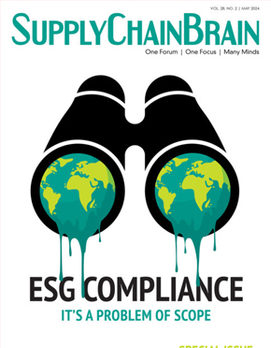
2024 Supply Chain ESG Guide
Case studies, recycled tagging fasteners: small changes make a big impact.

Enhancing High-Value Electronics Shipment Security with Tive's Real-Time Tracking

Moving Robots Site-to-Site
Jll finds perfect warehouse location, leading to $15m grant for startup, robots speed fulfillment to help apparel company scale for growth.

IMAGES
VIDEO
COMMENTS
If you have more questions about supply chain case study interview questions, leave them in the comments below. One of My Consulting Offer's case coaches will answer them. Other people prepping for supply chain case interviews found the following pages helpful: Our Complete Guide to Case Interview Prep, Case Interview Types, and; Case ...
Revised on October 10, 2022. An interview is a qualitative research method that relies on asking questions in order to collect data. Interviews involve two or more people, one of whom is the interviewer asking the questions. There are several types of interviews, often differentiated by their level of structure.
A supply chain case interview is a type of consulting case interview that focuses on evaluating a candidate's ability to analyze and solve complex supply chain-related problems. In this type of interview, candidates are presented with a hypothetical business scenario or real-world supply chain challenge and are expected to provide structured ...
Click on the "View Library" button (arrow 1) in upper right corner of the Account Management screen. In the Library screen you see a list of available supply chain case studies; click " Import " to load a selected case study into your account; give the imported case a Name, and click " My Account " to go back to your Account ...
They cover different aspects of supply chain management and feature a broad range of companies and situations. SCM case study examples would include an SCM selection project for a manufacturer, or an SCM implementation for a distributor or logistics provider. SCM case studies also feature TEC's own case studies, showing how we've helped ...
Supply chain optimization is a critical component of management consulting projects. It involves analyzing the flow of goods and services from suppliers to customers, identifying bottlenecks or inefficiencies in the process, and developing strategies to improve operations and reduce costs. A solid understanding of supply chain management ...
Four case studies will be presented, namely, 7-11, Tesco, Walmart, Amazon and Zappos. - 7/11 is another popular case study in supply chain management. The integration of information technology between stores and its distribution centers play the important role. Since the size of 7/11 store is pretty small, it's crucial that a store manager ...
Harvard University aims to be fossil-fuel neutral by 2026 and totally free of fossil fuels by 2050. As part of this goal, the university is trying to decarbonize its supply chain and considers replacing cement with a low-carbon substitute called Pozzotive®, made with post-consumer recycled glass. A successful pilot project could jump start ...
Case Study: How Should We Diversify Our Supply Chain? Summary. In the wake of Covid-19's disruptions, Kshore, a Chinese appliance maker, is thinking of realigning its supply chain. Like many ...
Share these free Supply Chain Management case studies with your class Engage your students with real-world case studies that provide insights into supply chain practices, challenges, and opportunities. Share each case study with your students by simply copying and pasting the activity page URL into your learning management system (LMS). Case 1: Rising Health Care Costs And The
Supply Chain Cost Management Results: Deere & Company's supply chain cost-management achievements included an inventory decrease of $1 billion, a significant reduction in customer delivery lead times (from ten days to five or less) and annual transportation cost savings of around 5%. 2. Intel.
Omnichannel shopping is the baseline expectation for customers, as companies such as Gap, Target, and many others have upped their omnichannel game. And Macy's is, er, behind. Macy's way of viewing their supply chain in the past was traditional: Move products from point A to point B and optimize costs at each stop along the way.
The first step in their experiment was to design a proof of concept. The team at Maersk took on the task, beginning with outreach. "We went to customers, we brought them in, we started some discussions," says Agmoni. "We looked into what could help them improve their supply chains.". Over the course of their research, customers commonly ...
Supply chain optimization keeps customers connected around the world. The forward-thinking EY supply chain model diversifies production and minimizes risk. 3. For a leading electronics provider that serves millions of customers around the world, keeping the organization's supply chain operating smoothly is of paramount importance.
So in this article, we have listed all the best free case examples available, in one place. The below list of resources includes interactive case interview samples provided by consulting firms, video case interview demonstrations, case books, and materials developed by the team here at IGotAnOffer. Let's continue to the list. McKinsey examples
Enhance profitability. Optimization typically leads to 5%- 10% net annual savings in total logistics operating costs, impacting: Transport costs. Fixed facility costs. Variable handling costs. Terminal productivity increases resulting from 'right-sizing'. Network analysis secures future performance of the supply chain given volatility in ...
JUNE 21, 2014. This week, I will speak at Llamasoft's conference on improving supply chain network design. One of the reports that I am writing is on the state of Supply Chain Planning (SCP). In the recent study of the Voice of the Supply Chain Leader , we find that the gaps are large, and growing. Case Study 282.
globalization have challenged the singular supply chain. In this case study, Gartner examines Dell's period of transformative change as it segmented customer requirements to create a portfolio of supply chain capabilities that provided multiple offerings focused on cost efficiency, speed to customers, choice of features and personalization
Managing the Inbound Supply Chain. Penske helped this supplier minimize supply chain disruptions by designing a network that optimized mode selection, routing and analysis. Read supply chain case studies about our work with customers to create supply chain management solutions that support long-term growth and profitability.
Emerald Emerging Markets Case Studies (EEMCS) Cases are written by case writers working in, or closely with, developing economies. They offer local perspectives with global appeal. The collection receives regular content updates throughout the year and all cases benefit from a supportive peer-review process to ensure the highest quality content ...
Case studies can provide: Profiles of real, individual companies, including information about their work processes, relationships. Profiles of industries, including information about the structure of the industry, and the relationships within the supply chain. Numbers and data.
Case Study Research 237 2 Supply Chain Management "The supply chain encompasses all activities associated with the flow and trans-formation of goods from raw materials stage (extraction), through to the end user, as well as the associated information flows. Material and information flow both up and down the supply chain.
Results: Recommended a two-DC network in Chino, CA and Cincinnati, OH that resulted in a 16% reduction ($26.3M) in supply chain operating expenses and a 67% increase in two-day service. "The Supply Chain Solutions group submitted an analytically rigorous recommendation that will help the client to increase market share, improve service and ...
1.4 Research questions The study will use a case study approach to address the following research questions: 9 1. What are the supply chain management practices adopted by a small ... The focus of this study is a supply chain that belongs to both the SME and food sector which is the main gap in literature and practice that
April 25, 2024. Helen Atkinson, Managing Editor. Technology, including AI, offers help with almost all challenges in today's supply chains. But it's important to separate hype from reality, says Amin Sikander, president of Synkrato. Challenges in today's supply chains include a scarcity of labor, as well as rising labor costs.